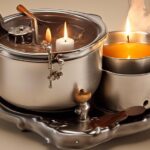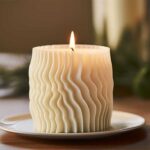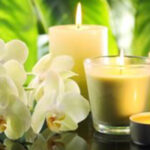Candles
How Do I Melt Candle Wax

Interested in learning about how candle wax melts? Look no further! We have gathered all the necessary tips and techniques for you.
Melting candle wax can be as easy as pie, and we’re here to guide you every step of the way. Whether you prefer a double boiler method, the convenience of a microwave, or the efficiency of a wax melting pot, we’ve got options for everyone.
Our goal is to serve you and make your candle-making experience a breeze. So, let’s dive in and discover the best methods to melt candle wax, ensuring you create beautiful candles to light up any room.
Key Takeaways
- Consider specific needs and preferences when selecting wax.
- Thoroughly research and choose reliable and reputable suppliers.
- Different types of candle waxes available with unique characteristics.
- Use alternative melting techniques such as double boiler method, slow cooker method, microwave method, wax melting pot, or candle wax warmer.
Choose the Right Wax
To choose the right wax for melting candle wax, we should consider our specific needs and preferences.
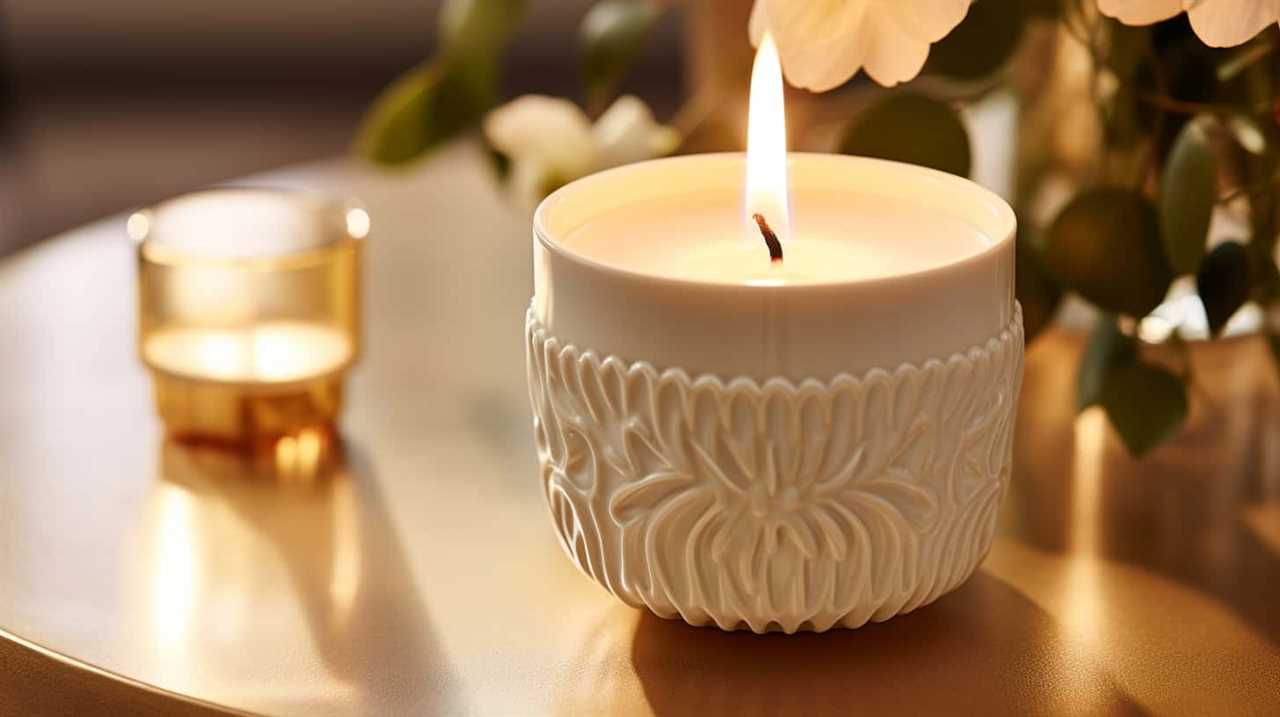
When it comes to selecting wax suppliers, it’s important to do thorough research and choose reliable and reputable suppliers.
There are different types of candle waxes available, each with its own unique characteristics. Paraffin wax is a common choice, known for its affordability and ease of use. Soy wax, on the other hand, is a natural and eco-friendly option. Beeswax is another popular choice due to its natural fragrance and long burn time. Additionally, there are specialty waxes like palm wax and gel wax, which offer unique properties for creating decorative and translucent candles.
Gather Your Materials
Now that we’ve chosen the right wax, let’s gather our materials.
First, we need to decide on a heat source option. Whether it’s a double boiler, a crockpot, or a microwave, each method has its own pros and cons.

Additionally, it’s essential to take safety precautions into consideration. Items such as oven mitts, a heat-resistant container, and a thermometer are necessary to ensure a safe and successful candle wax melting process.
Heat Source Options
Let’s gather our materials for the heat source options for melting candle wax. When it comes to melting candle wax, there are a few heat source options you can choose from:
- Heat Gun: A heat gun is a versatile tool that can produce high temperatures, perfect for melting candle wax quickly and efficiently. It’s portable and easy to use, making it a popular choice among candle makers.
- Hot Plate: A hot plate is a flat, electrically heated surface that provides a steady and controlled source of heat. It’s ideal for melting candle wax in a controlled environment and allows you to adjust the temperature as needed.
- Other Heating Devices: Apart from a heat gun and hot plate, you can also use other heating devices like a double boiler or a slow cooker to melt candle wax, depending on your preference and availability.
Now that we’ve our heat source options, let’s move on to the next step and discuss the safety precautions needed to ensure a smooth and safe candle wax melting process.
Safety Precautions Needed
For ensuring a smooth and safe candle wax melting process, we need to gather the necessary materials and take the proper safety precautions.
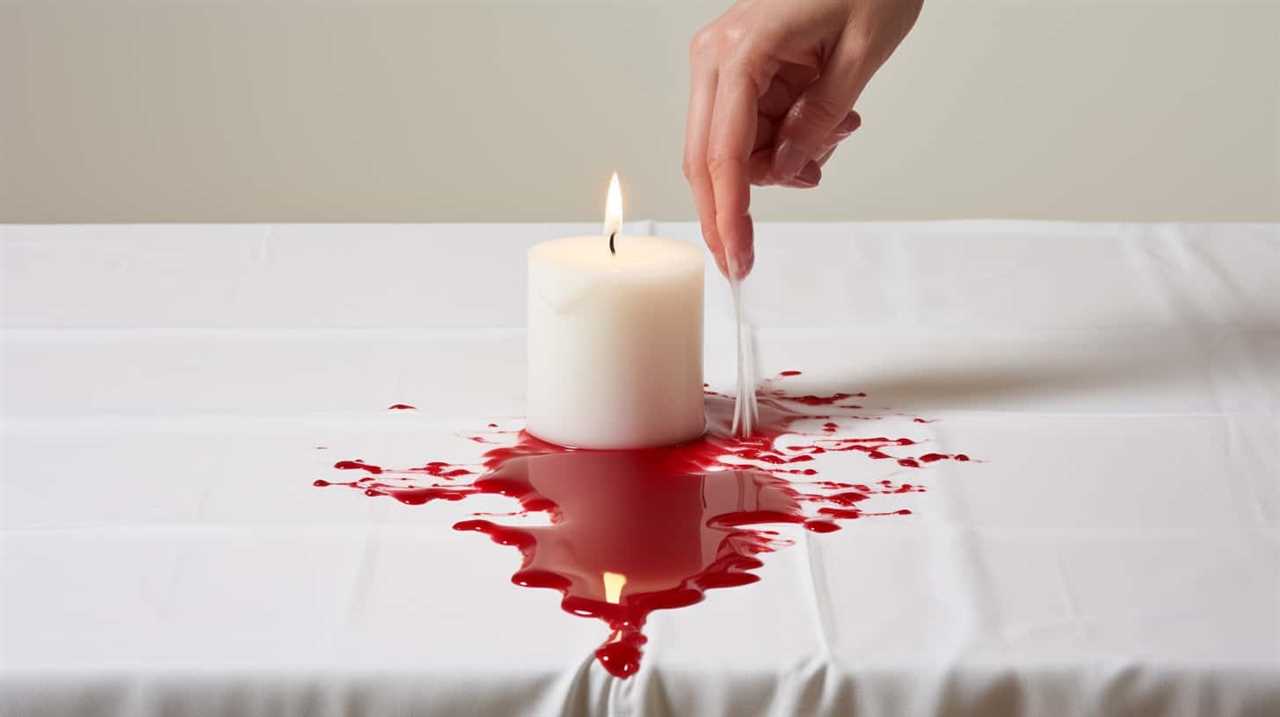
First and foremost, preventing accidents should be a top priority. To do this, always work in a clean and clutter-free area to minimize the risk of tripping or knocking over the wax.
It’s also important to have proper ventilation in the room where you’re melting the wax. This can be achieved by opening windows or using fans to ensure a good airflow, which helps to prevent the build-up of fumes that may be released during the melting process.
Additionally, make sure to have a fire extinguisher within reach and keep a watchful eye on the melting process at all times.
Prepare Your Work Area
First, we gather all the necessary materials and set up our work area.

- Clear a clean, flat surface to work on.
- Place a heat-resistant mat or tray on the surface to protect it.
- Gather all the materials needed for melting candle wax, such as a double boiler or a heat-resistant container and a heat source.
To prepare our workspace, we organize materials in an efficient manner.
- Arrange the candle wax, wicks, and any desired fragrance or color additives within easy reach.
- Keep tools like a thermometer and stirring utensil nearby.
- Ensure proper ventilation by opening windows or using a fan if working indoors.
Use a Double Boiler Method
When melting candle wax, it’s important to prioritize safety precautions. This includes using a double boiler method, which involves placing a heat-safe container with the wax inside another pot filled with water.
This indirect heat method helps prevent the wax from overheating or catching fire. Additionally, alternative melting techniques such as using a slow cooker or microwave can be explored for more convenience or specific needs.
Safety Precautions When Melting Wax
We always prioritize safety when melting wax using the double boiler method. It’s important to take precautions to prevent accidents and ensure a smooth and safe wax melting process.

Here are some safety measures to keep in mind:
- Use proper wax melting equipment: Invest in a double boiler specifically designed for melting wax. Avoid using makeshift containers or direct heat sources, as they can cause fires or accidents.
- Keep an eye on the temperature: Wax has a low flash point, so it’s crucial to monitor the temperature closely. Overheating the wax can lead to fire hazards and other safety risks.
- Avoid distractions: When melting wax, avoid distractions and focus on the task at hand. Accidents are more likely to occur when attention is divided.
By following these safety precautions, you can ensure a safe and enjoyable wax melting experience.
Alternative Melting Techniques
To melt candle wax using the double boiler method, an important alternative melting technique is to use a specific double boiler designed for this purpose. However, if you don’t have a double boiler on hand, there are other creative wax melting methods you can try.
One option is to use a heat-safe glass bowl or measuring cup placed inside a larger pot filled with water. This makeshift double boiler can be effective in melting candle wax safely and evenly.

Another alternative technique is to use a slow cooker. Simply place the wax in a heat-resistant container and set it inside the slow cooker filled with water. Heat on low until the wax melts completely.
These alternative melting techniques provide safe and convenient options for melting candle wax without a designated double boiler.
Try the Microwave Method
For melting candle wax quickly and efficiently, the microwave method is a convenient option. It’s important to consider microwave safety when using this method. Here are some steps to follow:
- Place the desired amount of candle wax in a microwave-safe container.
- Heat the wax in short intervals, usually 30 seconds or less, to prevent overheating.
- Stir the wax between intervals to ensure even melting.
The microwave method is a popular alternative for melting candle wax because it’s quick and requires minimal equipment. However, it’s crucial to prioritize safety when using this method. Always use microwave-safe containers and be cautious of overheating the wax.

Consider Using a Wax Melting Pot
Another option for melting candle wax is to use a wax melting pot. This method provides a convenient and efficient way to melt wax for various purposes. A wax melting pot is specifically designed for melting wax and comes with several benefits.
One of the main advantages of using a wax melting pot is its precise temperature control. This allows you to melt the wax at the optimal temperature without the risk of overheating or burning it. Additionally, a wax melting pot typically has a larger capacity compared to other methods, allowing you to melt a larger quantity of wax at once.
To help you visualize the benefits of using a wax melting pot, here is a table outlining some key features:
| Benefits of Using a Wax Melting Pot |
|---|
| Precise temperature control |
| Larger capacity |
| Even and consistent heat distribution |
| Easy to clean and maintain |
With these wax melting techniques and the convenience offered by a wax melting pot, you can now enjoy hassle-free and efficient candle making or wax melting experiences.
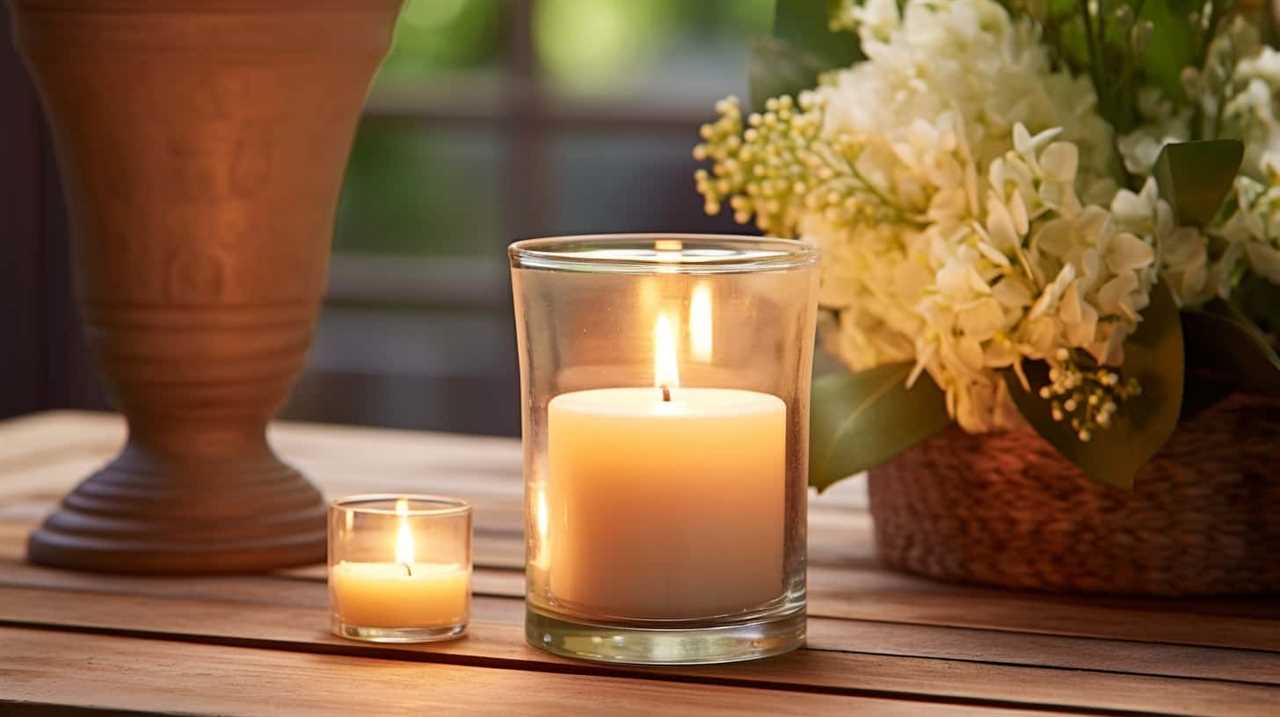
Use a Candle Wax Warmer
Let’s explore the option of using a candle wax warmer to continue our discussion on melting candle wax. Candle wax warmers offer a convenient and stylish way to enjoy the fragrance and decoration of candles without the need for an open flame.
Here are some key benefits of using a candle wax warmer:
- Fragrance: By using a candle warmer, you can release the delightful scent of your favorite candles throughout your space, creating a cozy and inviting atmosphere.
- Decoration: Candle wax warmers come in various designs and styles, making them a great addition to your home decor. They can add a touch of elegance and charm to any room.
- Safety: Unlike traditional candles, candle wax warmers eliminate the risk of accidental fires caused by an open flame, providing peace of mind.
Explore the Oven Method
We can now explore the oven method as another option for melting candle wax. The oven method is a simple and efficient way to melt candle wax, especially if you have a large amount to melt.
To begin, preheat your oven to a temperature slightly above the melting point of the wax you’re using. Most candle waxes have a melting point between 120 and 160 degrees Fahrenheit.
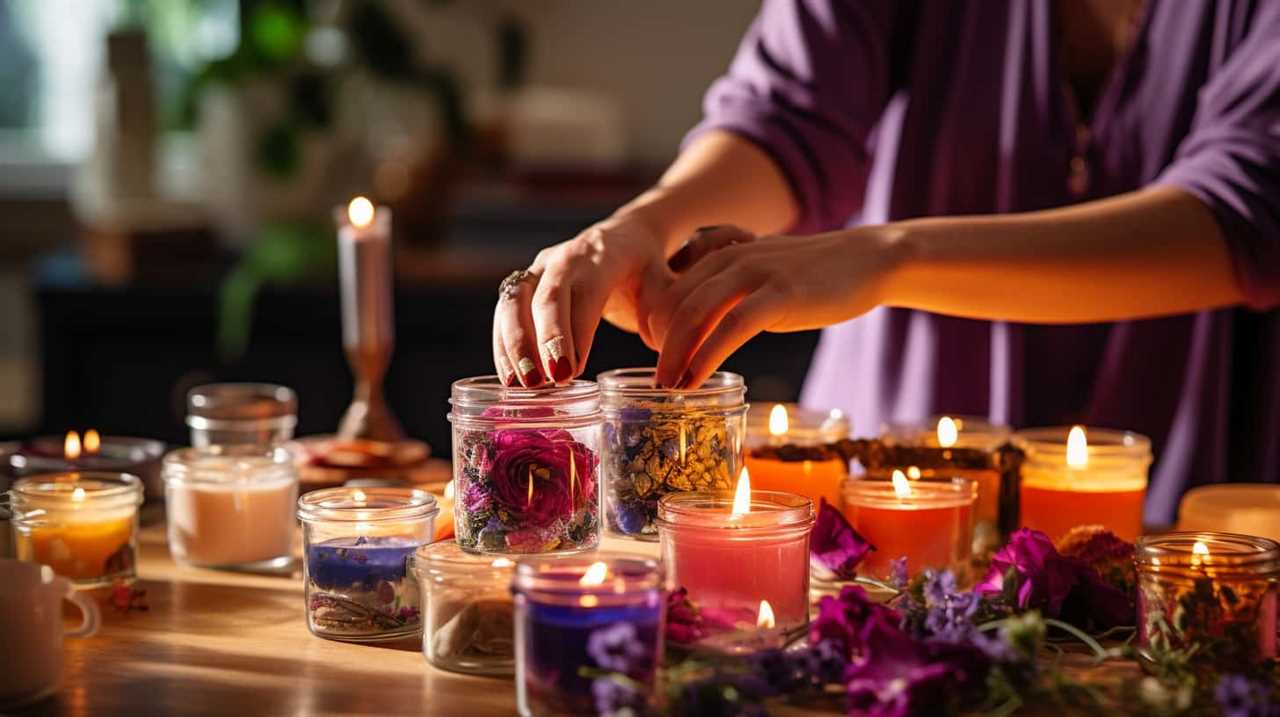
Place your wax in a heat-resistant container or a silicone mold and then place it on a baking sheet. Put the baking sheet in the preheated oven and allow the wax to melt for about 10-15 minutes.
Keep a close eye on the wax to prevent it from overheating and becoming a fire hazard. Remember to always follow safety instructions and guidelines when using the oven method to melt candle wax.
Safely Clean Up Afterwards
After melting the candle wax using the oven method, it’s important to safely clean up the area. Here are some steps to follow for a successful cleanup:
- Gather the necessary cleaning materials: You’ll need a scraper or spatula, paper towels or rags, dish soap, warm water, and a trash bag.
- Scrape off any excess wax: Use the scraper or spatula to gently remove any remaining wax from the surface.
- Clean the area: Mix dish soap with warm water to create a soapy solution. Use a cloth or paper towel to clean the affected area thoroughly.
- Proper disposal: Dispose of the wax scraps in a trash bag. Be sure to check with your local waste management regulations for proper disposal methods.
Frequently Asked Questions
Can I Use Any Type of Wax to Melt Candles?
Sure, you can use different types of wax to melt candles. However, it is important to consider their melting temperatures. Some waxes melt at lower temperatures, while others require higher temperatures for melting.
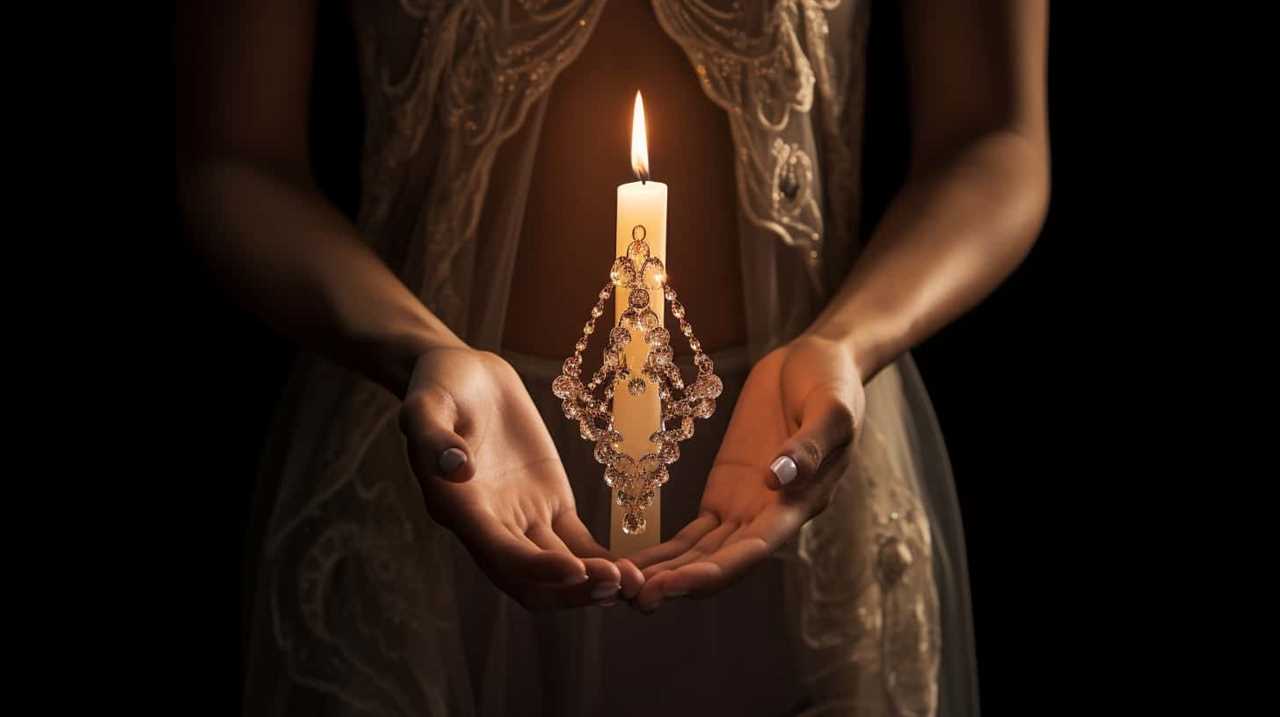
How Long Does It Take for the Wax to Fully Melt?
To achieve the best results when melting wax, it is important to consider the wax melting time and the ideal temperature. The time it takes for the wax to fully melt will depend on various factors such as the type of wax and the heat source used.
Can I Add Fragrance or Color to the Melted Wax?
Adding fragrance and color to melted wax is safe and can enhance the ambiance of your candles. Some DIY alternatives include using essential oils or crayons. Be sure to follow proper safety precautions when handling hot wax.
Can I Reuse the Melted Wax for Future Candle Making Projects?
Yes, you can reuse the melted wax for future candle making projects! Recycling the wax not only saves money but also benefits the environment. It’s like giving your candles a second life, while reducing waste. Win-win!
What Safety Precautions Should I Take When Melting Candle Wax?
When melting candle wax, it’s crucial to take safety measures. Make sure to have necessary equipment such as a double boiler and thermometer. Protect yourself by wearing heat-resistant gloves and goggles.

Conclusion
In conclusion, melting candle wax can be a fun and creative process, similar to unlocking a hidden treasure within the wax. By following the various methods outlined in this article, you can safely and easily melt candle wax to create your own unique candles.
So grab your materials, choose your preferred method, and let your imagination soar as you transform solid wax into a liquid masterpiece. Enjoy the journey of melting wax and let your creativity shine!
My name is Jane and I absolutely adore candles. They can be found all over my house – in every room and on every surface. I am drawn to the delightful scent of candles and how they create a warm and cozy atmosphere.
Candles hold a special place in my heart. They help me unwind and destress after a tiring day. They evoke joyful memories and bring me a sense of tranquility and serenity. I truly cannot picture my life without candles!
Candles
How to Make a Unity Candle

Are you ready to embark on the journey of crafting a beautiful unity candle? Join us as we guide you through each step in designing your own unique symbol of love and unity.
In this guide, we will take you step by step, sharing our expertise and techniques for creating a masterpiece that will be the highlight of your wedding ceremony.
With our easy-to-follow instructions and helpful tips, you’ll learn how to gather the necessary materials, choose a design that reflects your unique style, and prepare the candle containers.
So, let’s dive in and start making memories that will last a lifetime with our guide on how to make a unity candle.

Key Takeaways
- The unity candle symbolizes the merging of two lives into one.
- Customizing the design of the unity candle allows for personal expression and reflection of shared interests.
- Selecting the perfect wax is crucial for creating a high-quality unity candle.
- Adding fragrance and color to the unity candle can enhance its aesthetic appeal and complement the wedding theme.
Gather Your Materials
To begin making a unity candle, we need to gather all of our materials.
The materials needed for creating a unity candle are simple yet significant. First and foremost, we require two taper candles, one for the bride and one for the groom, symbolizing their individuality.
Next, we need a larger pillar candle, representing the unity of their lives coming together. Additionally, we’ll need candleholders or stands to keep the candles secure during the ceremony.
It’s essential to choose candles and holders that reflect the couple’s personal style and preferences, as they’ll become a cherished keepsake.

The unity candle symbolizes the merging of two lives into one and holds immense meaning in wedding ceremonies.
Choose a Design for Your Unity Candle
Now that we’ve gathered our materials, let’s decide on a design for our unity candle.
The design of a unity candle can vary greatly, allowing couples to express their individuality and personal style. Here are some popular unity candle designs to consider:
- Classic Design:
- This design features a simple, elegant candle with the couple’s names and wedding date engraved on it.
- It symbolizes the unity and commitment of the couple, with the flame representing the eternal bond they’re creating.
- Customized Design:
- Couples can opt for a customized design that reflects their shared interests, hobbies, or cultural backgrounds.
- They can incorporate symbols, images, or colors that hold personal significance, making the unity candle truly unique and meaningful.
Prepare the Candle Containers
After choosing the design for our unity candle, we need to prepare the candle containers. This step is crucial to ensure that the candle decoration is well-executed and the personalized unity candle looks flawless.
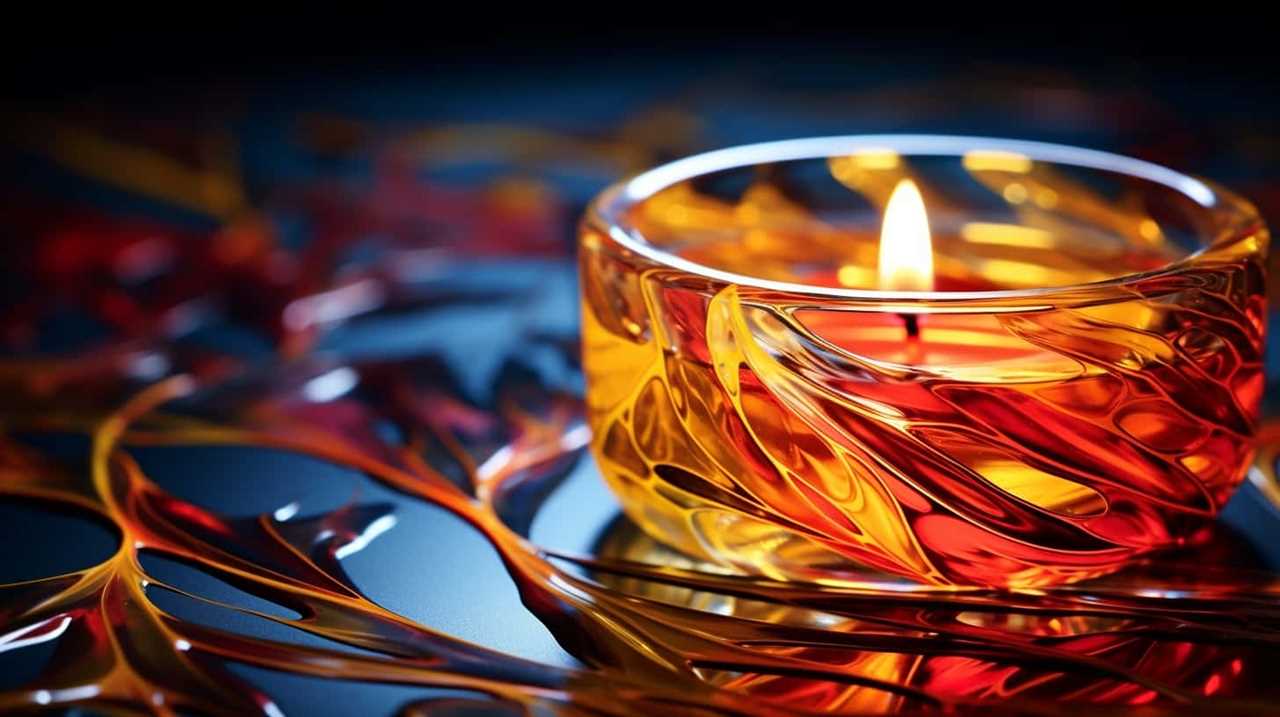
First, we should select containers that are suitable for holding the candles securely and allowing them to burn evenly. Glass containers are commonly used for unity candles due to their heat resistance and elegant appearance.
Next, we should clean the containers thoroughly to remove any dust or debris that could interfere with the candle’s presentation.
Additionally, consider adding a personal touch by decorating the containers with ribbons, flowers, or other embellishments that complement the overall design.
Select the Perfect Wax for Your Candle
Once we’ve prepared the candle containers, the next step is to select the perfect wax for our unity candle. When it comes to candle waxes, there are several types to choose from, each with its own unique characteristics. To help you make an informed decision, here are two sub-lists that outline the different types of candle waxes and the benefits of soy wax:
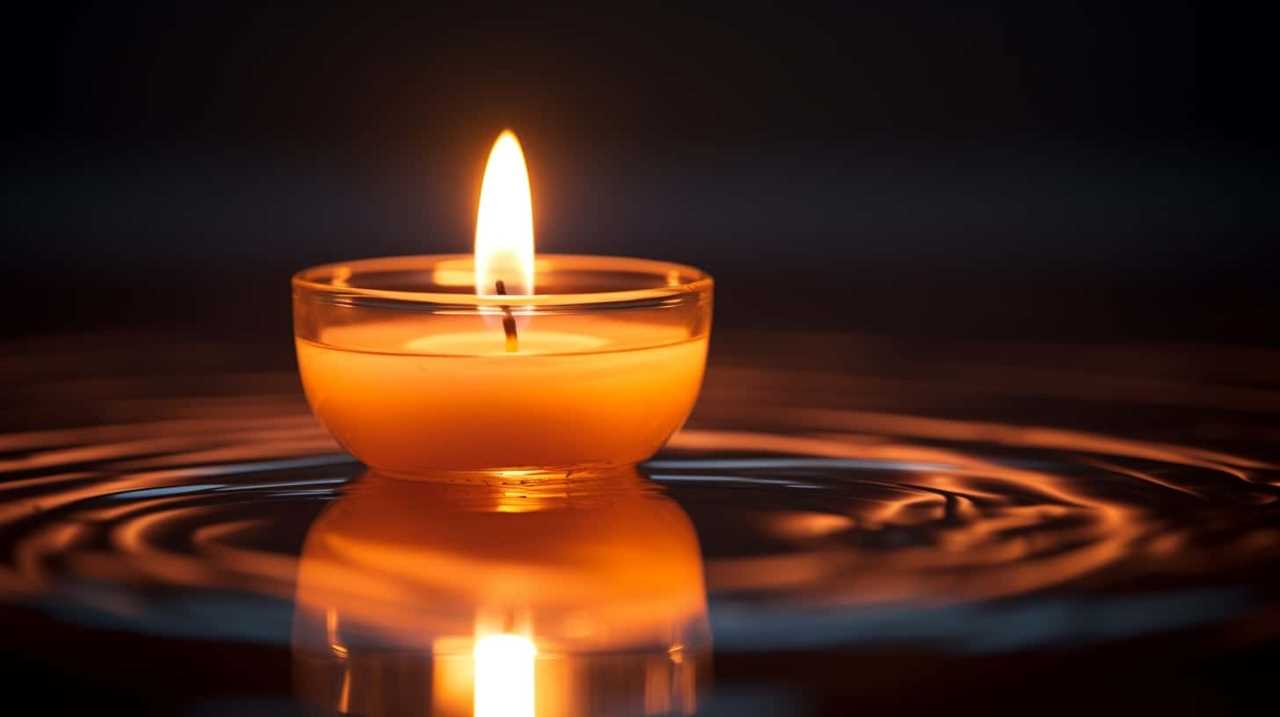
Types of Candle Waxes:
- Paraffin wax
- Beeswax
- Soy wax
- Coconut wax
- Palm wax
Benefits of Soy Wax:
- Eco-friendly and renewable
- Burns cleaner and longer
- Produces less soot and toxins
- Has a lower melting point, making it safer to handle
- Holds fragrance and color well
Add Fragrance and Color to Your Candle
To enhance our unity candle, we’ll add fragrance and color using a variety of options.
When it comes to fragrance, there are numerous options to choose from. You can opt for essential oils, such as lavender or eucalyptus, which not only provide a pleasant scent but also offer therapeutic benefits. Alternatively, you could go for fragrance oils, which come in a wide range of scents, allowing you to find the perfect aroma to complement your ceremony.

As for color choices, you can use either liquid dyes or color blocks specifically designed for candle making. These options offer a vast array of vibrant and subtle hues, enabling you to customize your unity candle to match your wedding theme or personal preference.
Now that we’ve selected our fragrance and color, it’s time to move on to the next step: melting and pouring the wax into the containers.
Melt and Pour the Wax Into the Containers
Now that we’ve added fragrance and color to our candle, it’s time to move on to the next step: melting and pouring the wax into the containers.
Safety precautions are crucial during this process, as melting wax can be dangerous. Once we’ve ensured our safety measures, we can proceed with pouring the melted wax into our containers, taking care to decorate the unity candle to our liking.

Safety Precautions for Melting Wax
We always prioritize safety when melting the wax and pouring it into the containers. Here are some important safety precautions to keep in mind:
Wax melting techniques:
- Use a double boiler or a wax melting pot to ensure even heat distribution and prevent the wax from overheating or catching fire.
- Stir the wax gently and consistently to avoid hot spots and promote uniform melting.
Proper ventilation while melting wax:
- Choose a well-ventilated area to melt the wax, preferably near an open window or with a fan running, to prevent the accumulation of harmful fumes.
- If working in a small space, consider using a fume hood or wearing a respiratory mask to protect yourself from inhaling the vapors.
Decorating the Unity Candle
After ensuring the safety precautions for melting wax have been followed, it’s time for us to decorate our unity candle by melting and pouring the wax into the containers. This step is crucial in creating a beautiful and personalized unity candle for your ceremony.
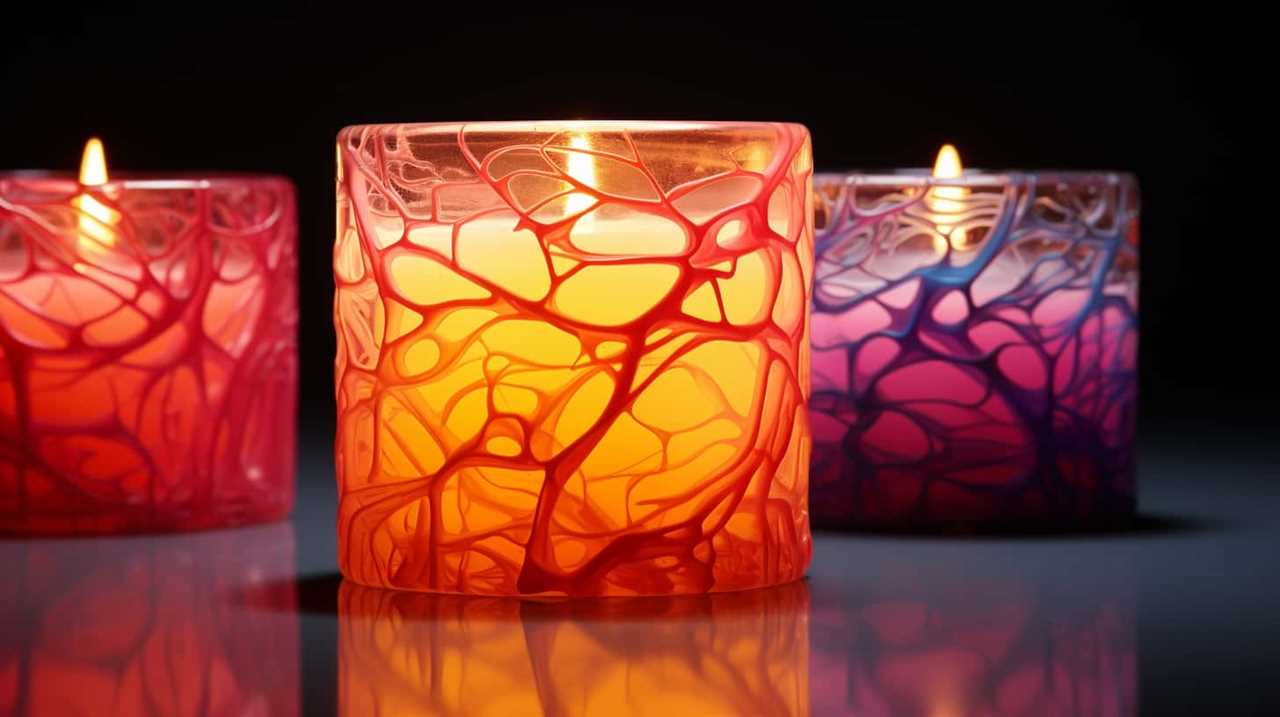
To begin, gather your containers and place them on a heat-resistant surface. Next, melt the wax using a double boiler or a melting pot specifically designed for candle making. Be sure to stir the wax gently and consistently to prevent air bubbles from forming.
Once the wax has reached the desired temperature, carefully pour it into the containers, taking care not to spill or overflow. This is a great opportunity to get creative and add unique touches to your unity candle. Consider adding dried flowers, ribbons, or even personalized decals to make it truly special.
With the wax poured, it’s time to move on to the next step: inserting the wicks and letting the candles cool.
Insert the Wicks and Let the Candles Cool
To begin, it’s important to insert the wicks into the candles and allow them to cool. This step is crucial in candle making techniques as it ensures that the wicks are securely in place and the candles set properly. Here are some key points to keep in mind during this process:
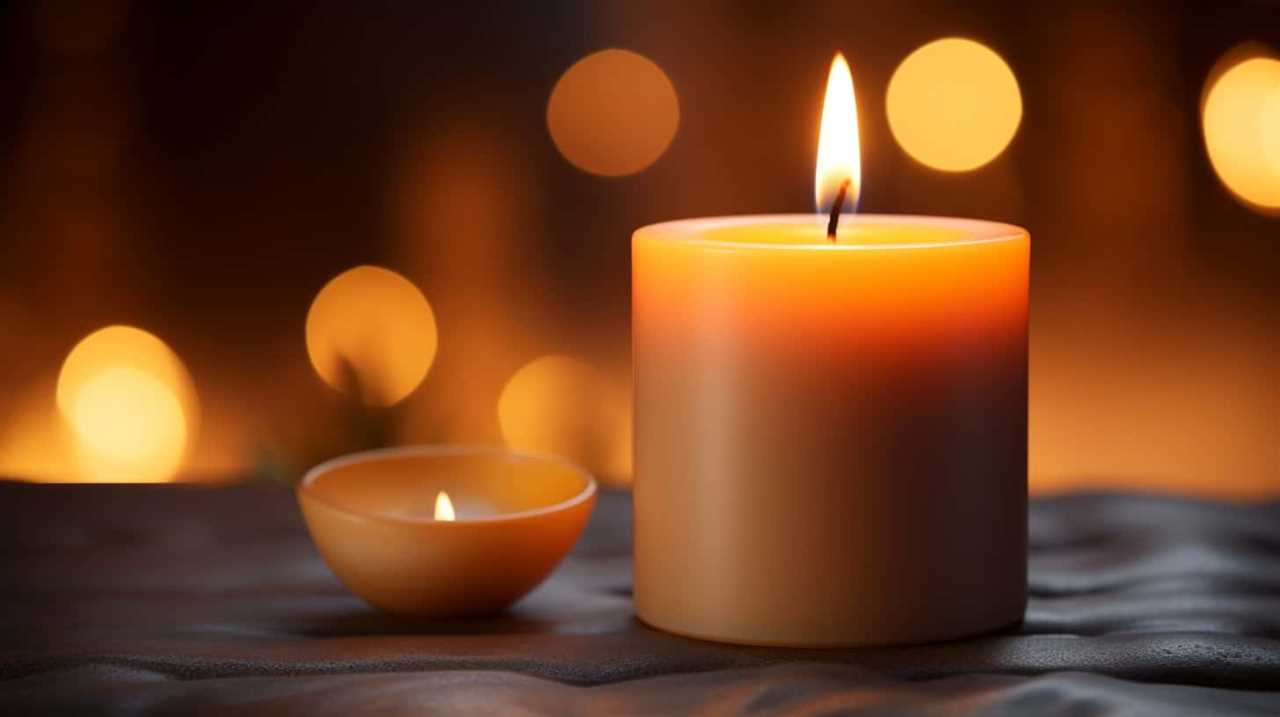
- Choose the right wicks: Select wicks that are appropriate for the size and type of candles you’re making. There are various wick sizes and materials available, such as cotton or wooden wicks, to suit different candle designs.
- Insert the wicks correctly: Place the wicks at the center of each candle, making sure they’re straight and secure. You can use a wick holder or simply hold the wick in place until the wax cools.
After inserting the wicks, it’s essential to let the candles cool completely. This allows the wax to solidify and ensures that the wicks remain centered. Once the candles have cooled, you can move on to the next step of decorating your unity candle, where you can unleash your creativity and explore alternative unity candle ideas.
[Transition sentence]: Now that the wicks are inserted and the candles have cooled, it’s time to let your imagination run wild and decorate your unity candle.
Decorate Your Unity Candle
Now that we’ve inserted the wicks and allowed the candles to cool, let’s unleash our creativity and decorate our unity candle.
Decorating the unity candle is an opportunity to add personal touches and symbolism to your wedding ceremony. The unity candle holds immense significance as it represents the joining of two individuals and families.
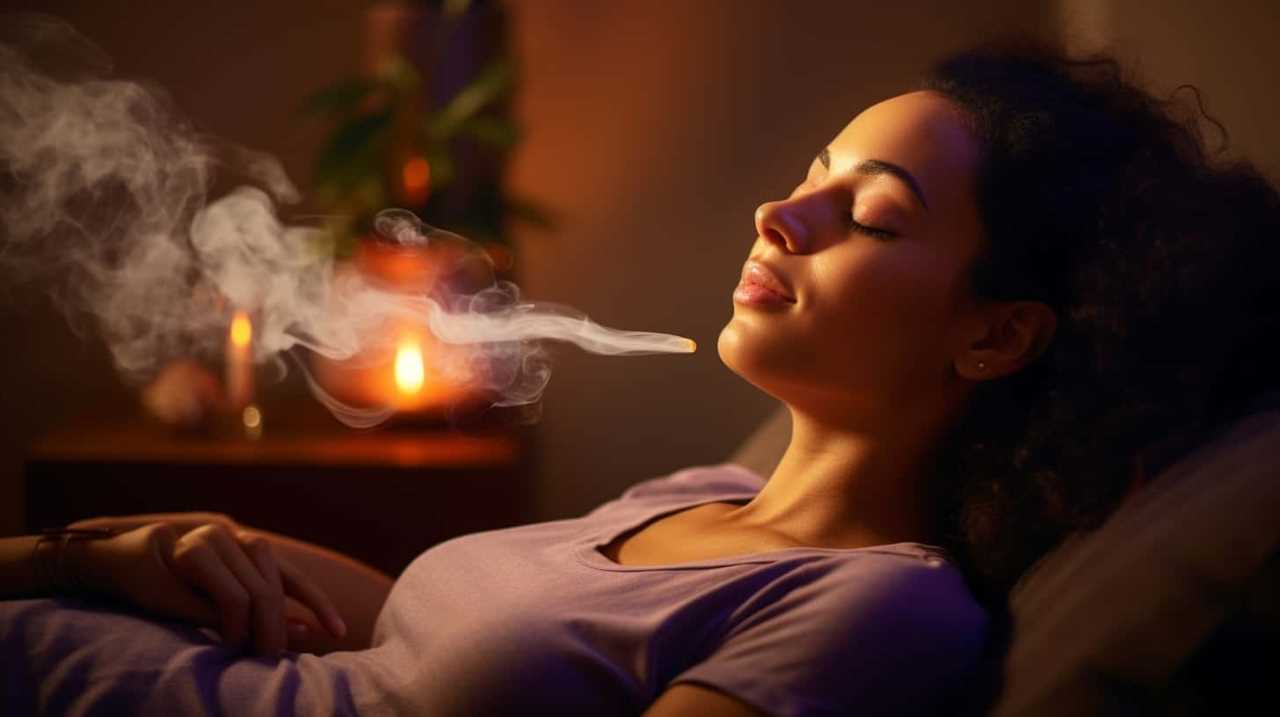
To enhance the symbolism, you can incorporate elements such as ribbons, charms, or engraved names and dates. Consider using colors that hold special meaning to you and your partner.
Alternatively, you can explore alternative unity candle ideas, such as using different-sized candles to represent each partner and their families, or even creating a custom-designed unity candle that reflects your unique style.
Light the Unity Candle in Your Wedding Ceremony
To continue with the ceremony, we light the unity candle, symbolizing the union of two individuals and families. Lighting the unity candle is a significant moment in a wedding ceremony, representing the coming together of two lives.
Here are some lighting techniques and the symbolism behind the unity candle:

- Lighting Techniques:
- The traditional method involves the bride and groom each taking a lit taper candle and simultaneously lighting the larger unity candle together.
- Another option is to have the parents of the couple light the taper candles, symbolizing the support and love from both families.
- Symbolism of the Unity Candle:
- The two taper candles represent the separate lives of the bride and groom.
- The larger unity candle represents their new life together as one.
- As the couple lights the unity candle, it signifies their commitment to each other and the merging of their families.
Frequently Asked Questions
How Long Does It Take for the Candles to Cool After Pouring the Wax?
After pouring the wax, the candles need about 2-3 hours to cool completely. To ensure the best results, use a high-quality wax specifically designed for unity candles, as it will have a longer cooling time.
Can I Use Scented Wax for the Unity Candle?
Using scented wax for the unity candle can add a delightful fragrance to your ceremony. However, it’s important to consider the pros and cons. Alternatively, you can explore other ways to add fragrance.
What Kind of Wicks Should I Use for the Unity Candle?
When making a unity candle, it’s important to choose the right kind of wicks. We recommend using cotton wicks, as they are the most reliable and give a clean, even burn.
Can I Use a Different Type of Container for the Unity Candle?
Using alternative materials for the unity candle allows for endless creativity. Whether it’s a unique container or personalized decorations, the possibilities are exciting. With careful attention to detail, the unity candle can become a true masterpiece.

How Long Does the Unity Candle Typically Burn During a Wedding Ceremony?
During a wedding ceremony, the unity candle typically burns for around 5-10 minutes. It symbolizes the joining of two families and the unity of the couple. Alternatives to the unity candle include sand ceremonies or handfasting rituals.
Conclusion
In conclusion, creating a captivating unity candle for your wedding ceremony is an artful and aromatic endeavor. By gathering the necessary materials, choosing a design, and carefully preparing the containers, you can craft a candle that symbolizes the union of two souls.
With the perfect wax, fragrance, and color, your candle will radiate beauty and significance. So, immerse yourself in the process, ignite your creativity, and let the flickering flames of your unity candle illuminate your love story.
My name is Jane and I absolutely adore candles. They can be found all over my house – in every room and on every surface. I am drawn to the delightful scent of candles and how they create a warm and cozy atmosphere.
Candles hold a special place in my heart. They help me unwind and destress after a tiring day. They evoke joyful memories and bring me a sense of tranquility and serenity. I truly cannot picture my life without candles!
Candles
How to Make a Wickless Candle

Are you interested in creating a candle without a wick? Look no further! This step-by-step tutorial will guide you through the process of crafting a wickless candle.
By following our expert instructions, you will master the art of crafting these unique candles in no time. We will guide you through the process, from gathering the necessary supplies to decorating your finished creation.
Our language is tailored for those seeking mastery in candle making, providing you with the knowledge and skills to create beautiful wickless candles.
So, let’s get started on this exciting journey and discover the secret behind making your very own wickless candle!
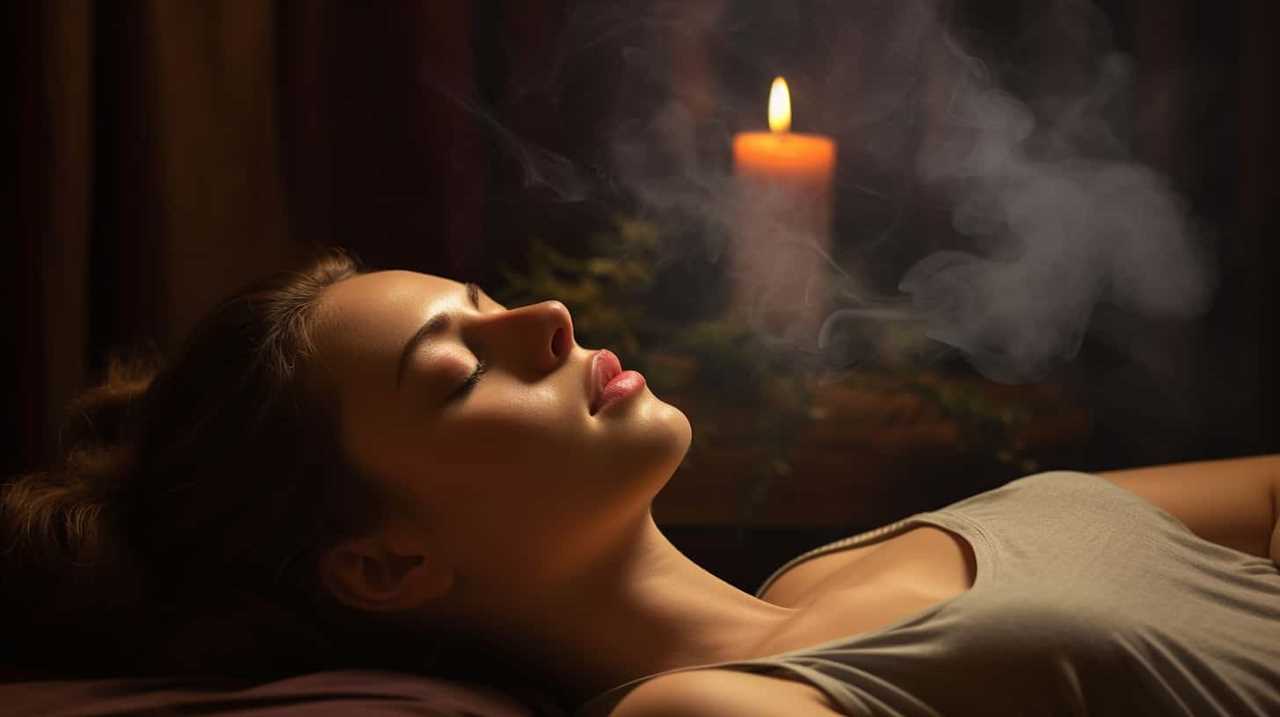
Key Takeaways
- Choose the right wax by considering options like soy, beeswax, paraffin, and coconut wax
- Consider the benefits of each wax, such as affordability, scent throw, burn time, and toxicity levels
- Select a suitable container based on size, material, burn time, and the purpose of the candle
- Explore different ways to decorate the candle, including ribbons, labels, dried flowers, and unique designs
Gather Your Supplies
To start making a wickless candle, we need to gather our supplies.
First, we must consider our container options. Glass jars or heat-resistant containers are ideal for holding the melted wax. Make sure the container is clean and free from any debris.
Next, we need to gather the ingredients for the melting process. We’ll need soy wax flakes, fragrance oils, and dye if desired. Additionally, we’ll need a double boiler or a heat-resistant container and a heat source, such as a stove or a hot plate. It’s important to have a thermometer to monitor the temperature of the wax.
Lastly, don’t forget about the tools like a whisk or a stirrer, a scale for measuring the wax, and a pouring pitcher for easy pouring.

With these supplies ready, we can move on to the next step of making our wickless candle.
Choose Your Wax
Now that we’ve gathered our supplies, we need to choose the right wax for our wickless candle.
There are several options available, such as soy, beeswax, paraffin, and coconut wax. Each type of wax has its own benefits and characteristics, so it’s important to consider these factors before making a decision.
Let’s explore the properties of each wax and how they can affect the overall quality of our candle.

Soy or Beeswax
We prefer using soy or beeswax as our wax choice when making a wickless candle. Both soy and beeswax have their own benefits and uses, so it ultimately comes down to personal preference. To help you decide, here is a comparison and cost analysis of the two options:
| Wax Type | Benefits and Uses | Cost |
|---|---|---|
| Soy | – Natural and renewable material |
- Burns longer and cleaner
- Releases fragrance well
- Easy to work with | Generally more affordable than beeswax |
| Beeswax | – Natural and sustainable - Burns longer and emits a warm glow
- Releases a subtle honey scent
- Purifies the air | Generally more expensive than soy |
Consider your priorities and budget when choosing between soy and beeswax for your wickless candle. Both options have their advantages, so go with the one that aligns with your needs and preferences.
Paraffin or Coconut
When considering the wax for our wickless candle, the choice between paraffin or coconut is an important decision to make. Both paraffin and coconut wax have their own unique properties and benefits. Here is a comparison to help you decide the best wickless candle wax for your needs:
- Paraffin wax:
- Made from petroleum byproducts.
- Provides a strong scent throw, filling the room with fragrance.
- Has a longer burn time compared to other waxes.
- Coconut wax:
- Made from the meat of coconuts.
- Offers a clean and natural burn.
- Produces a soft, creamy texture that’s easy to work with.
Ultimately, the choice between paraffin and coconut wax depends on your preferences and priorities. If you prioritize a strong scent throw and longer burn time, paraffin wax may be the best option for you. On the other hand, if you value a clean and natural burn, along with a soft and creamy texture, coconut wax may be the better choice.

Consider your desired outcome and experiment with both to find the perfect wax for your wickless candle.
Benefits of Each
The advantages of each wax type should guide our choice when deciding between paraffin and coconut wax for our wickless candle. Understanding the benefits of wickless candles is essential in order to use them effectively.
Paraffin wax is a popular choice due to its affordability and accessibility. It has a high melting point, which means it can hold its shape well. Additionally, paraffin wax has a strong scent throw, meaning it can release fragrance effectively. However, it does produce some soot and may contain toxins.
On the other hand, coconut wax is a natural and sustainable option. It has a lower melting point, which allows for a longer burn time. Coconut wax also has a clean burn, producing minimal soot and no toxins. It has a subtle scent throw, making it perfect for those who prefer a more subtle fragrance.
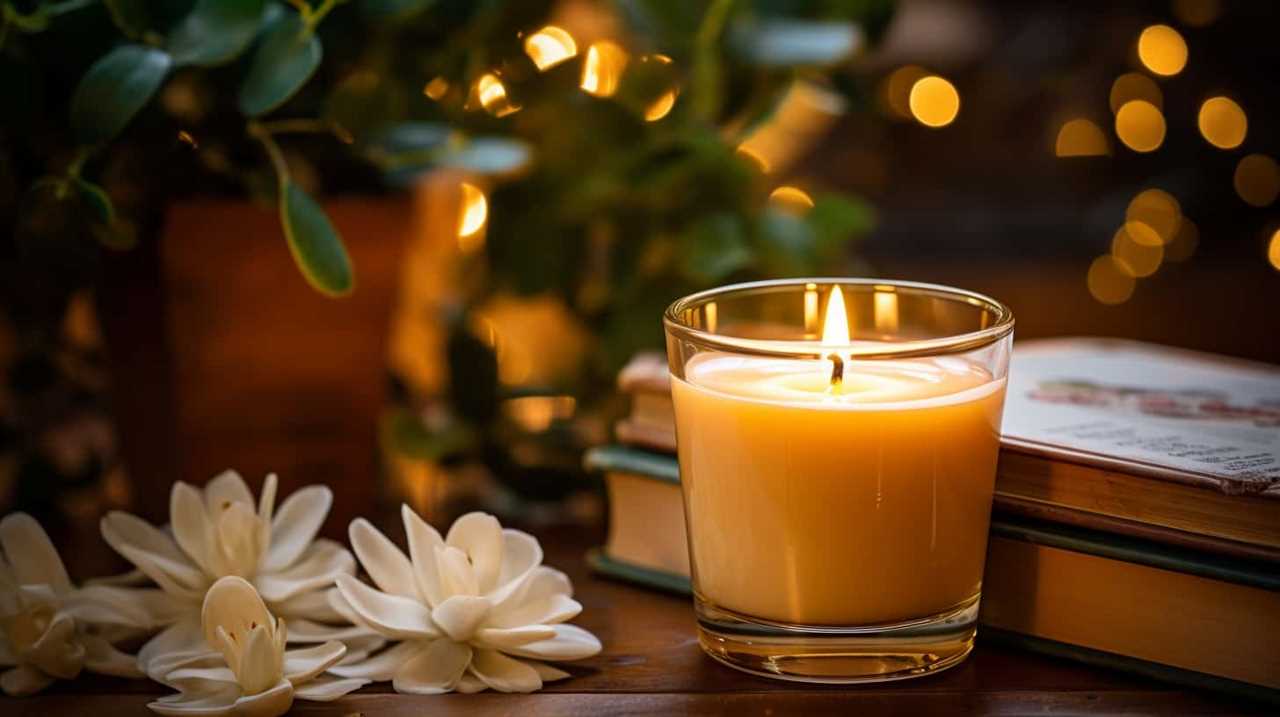
Considering these benefits, we can make an informed decision when choosing between paraffin and coconut wax for our wickless candle.
Select a Container
Now that we’ve chosen our wax, it’s time to select a container for our wickless candle.
There are a few points to consider when choosing the right container. First, think about the size options available – do you want a small, travel-sized candle or a larger one for your living room?
Next, consider the material of the container – glass, ceramic, or tin?

Lastly, let’s explore some decorative container ideas to add a personal touch to your candle-making project.
Container Size Options
We prefer using a glass jar as our container for making wickless candles. When selecting a container size, it’s important to consider the burn time of the candle. Here are three options to choose from:
- Small containers: These are great for shorter burn times, typically ranging from 10-15 hours. They’re perfect for small spaces or for trying out different scents without committing to a larger candle.
- Medium containers: These provide a longer burn time, usually lasting between 20-30 hours. They’re ideal for medium-sized rooms or for those who enjoy having a candle burning for a longer period.
- Large containers: These offer the longest burn time, lasting between 40-50 hours. They’re perfect for larger rooms or for those who prefer to have a candle burning throughout the day.
When selecting a container size, consider the space you intend to use the candle in and how long you want it to burn.
Material Considerations
For our wickless candle, we need to carefully consider the materials used for the container. Choosing the right material is crucial for both the functionality and safety of the candle.
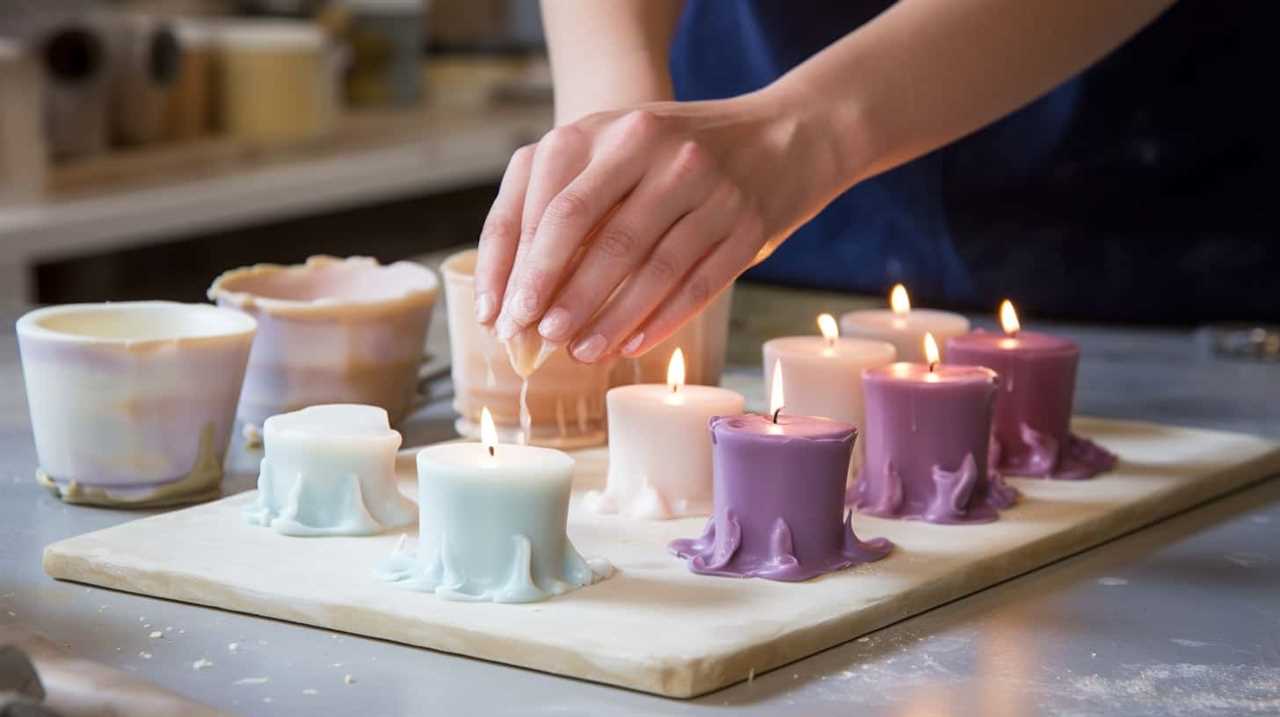
When selecting a container, it’s important to keep in mind alternative materials that can be used instead of traditional options like glass or ceramic. One alternative material that’s gaining popularity is silicone. Silicone containers are heat-resistant and can withstand high temperatures without melting or warping, making them a safe option for wickless candles.
Another alternative material to consider is stainless steel. Stainless steel containers aren’t only durable and long-lasting, but they also provide excellent heat retention, ensuring that the candle melts evenly and efficiently.
When it comes to wickless candle safety, selecting the right container material is essential for a successful and worry-free candle-making experience.
Decorative Container Ideas
When selecting a container for our wickless candle, it’s important to consider various decorative options available. Here are some ideas for decorative candle holders and repurposing household items:
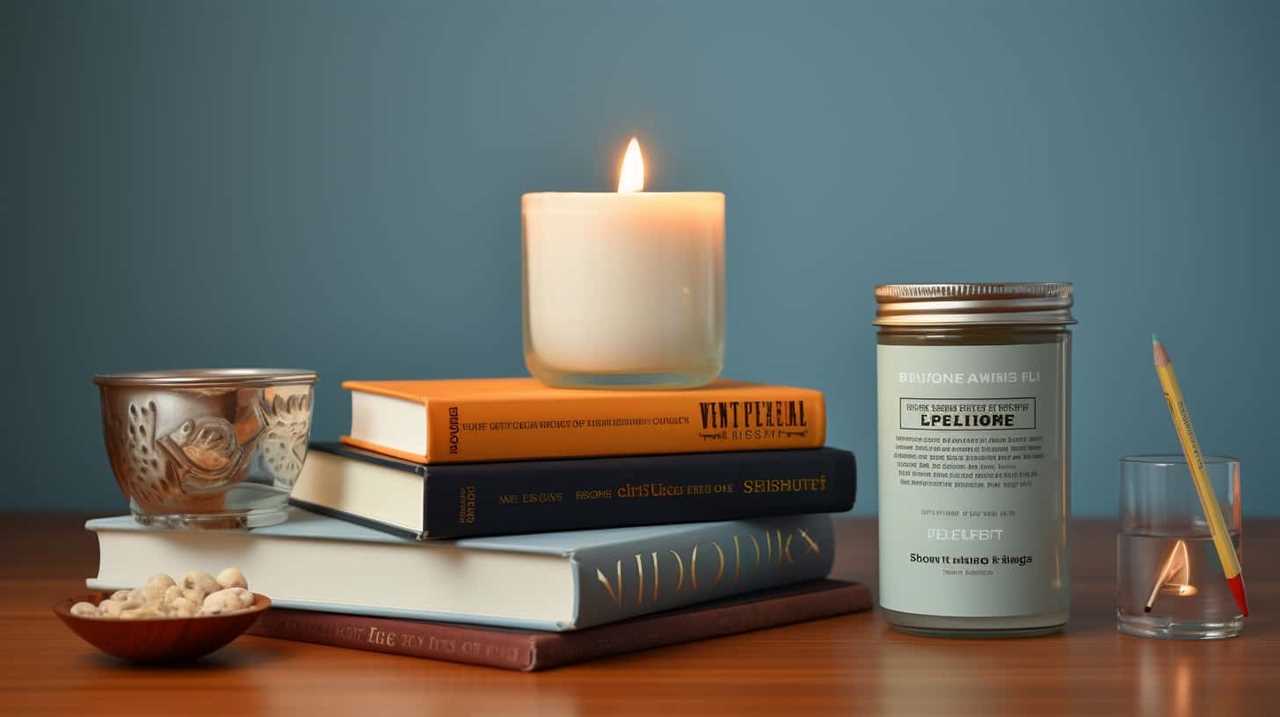
- Mason jars: These versatile containers can be found in various sizes and styles. They provide a rustic and cozy feel to your wickless candle. You can decorate them with ribbons, twine, or even paint them to match your decor.
- Teacups and saucers: Repurpose vintage teacups and saucers as unique candle holders. They add a touch of elegance and charm to any space. You can find these at thrift stores or flea markets.
- Glass bottles: Give a second life to empty glass bottles by turning them into candle holders. Remove the labels, clean them thoroughly, and insert your wickless candle. You can even add decorative elements such as beads or seashells inside the bottle for an extra touch of creativity.
Prepare the Container
To prepare the container for our wickless candle, gather all necessary materials and ensure that it’s clean and free of any debris.
First, consider the size of the container. Wickless candles can be made in various sizes, depending on your preference and the amount of wax you have. Smaller containers are perfect for a personal candle while larger ones are ideal for creating a centerpiece.
Next, think about the material of the container. Glass jars are a popular choice as they’re heat resistant and allow you to see the beautiful glow of the candle. Ceramic or metal containers can also be used, but make sure they’re heat-safe.
Once you have chosen the container, thoroughly clean it with warm soapy water to remove any dirt or dust. Dry it completely to ensure a clean surface for your wickless candle.

Melt the Wax
Now that we’ve prepared our container, it’s time to melt the wax. The temperature for melting wax should be around 180-185 degrees Fahrenheit to ensure that it melts evenly and doesn’t burn.
If you don’t have access to a stove or microwave, you can also consider using alternative wickless materials such as soy or beeswax melts, which can be melted in a wax warmer.
Temperature for Melting Wax
Our recommended temperature for melting the wax is crucial to ensure a smooth and even consistency. It’s important to note that different types of waxes have different melting points.
Here is a step-by-step guide on achieving the optimal temperature for melting your wax:

- Determine the melting point of your specific wax. This information can usually be found on the packaging or from the supplier.
- Set up a double boiler system by placing a heat-resistant container filled with wax pellets or chunks into a larger pot filled with water. This indirect method will prevent the wax from scorching.
- Heat the water on low to medium heat and monitor the temperature using a candy or candle thermometer. Aim for a temperature that’s just above the melting point of your wax, usually between 160°F to 180°F (71°C to 82°C).
Alternative Wickless Materials
After determining the optimal temperature for melting the wax, we frequently use alternative wickless materials to achieve the desired consistency. These alternative materials provide different options for making wickless candles, allowing for creative experimentation and customization.
One popular alternative material is soy wax, which is derived from soybean oil and has a lower melting point than traditional candle wax. Soy wax is known for its clean burn and longer-lasting scent.
Another option is beeswax, which has a natural honey scent and a higher melting point. Beeswax is often used for its eco-friendly properties and ability to purify the air.
Lastly, coconut oil can be used as an alternative wickless material. It has a low melting point and provides a smooth and creamy texture to the candle.
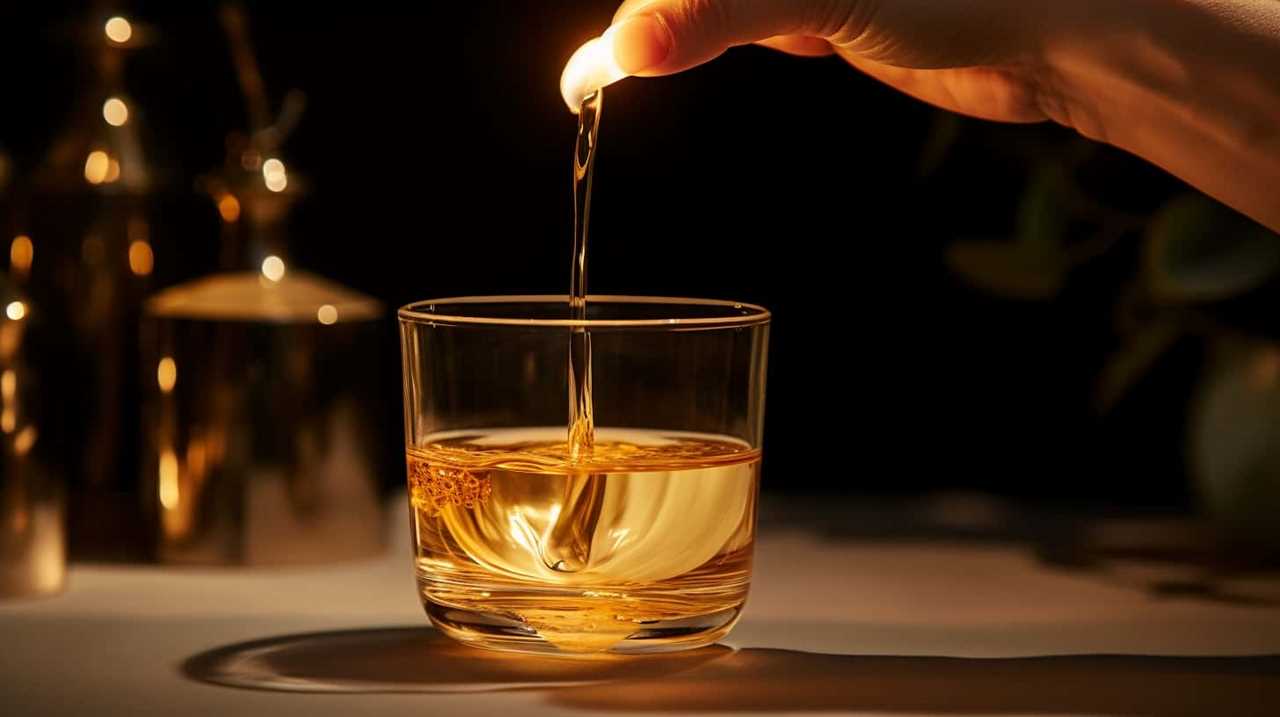
These alternative materials give you the flexibility to create unique wickless candles with different scents and textures.
Add Fragrance and Color
We enhance the wickless candle by adding fragrance and color. Here’s how to do it:
- Fragrance Selection:
- Choose high-quality fragrance oils specifically designed for candles.
- Consider the scent’s strength and how it complements the purpose of your candle.
- Experiment with different combinations to create unique aromas.
- Color Combinations:
- Use candle dye chips or liquid candle dyes for coloring.
- Start with small amounts and gradually add more until you achieve the desired shade.
- Mix different colors to create custom shades or use pre-made color combinations.
Adding fragrance and color to your wickless candle enhances its appeal and creates a more enjoyable experience. Remember to test your fragrance and color combinations beforehand to ensure the desired results.
Pour the Wax Into the Container
To complete the process, the wax is poured into the container. Pouring the wax is a crucial step in creating a wickless candle, as it ensures that the wax is evenly distributed and properly sets in the container.

There are different methods you can use to pour the wax into the container, depending on your preference and the desired outcome. One method is to slowly pour the melted wax from the pouring pitcher into the container, making sure to leave some space at the top for the fragrance. Another method is to use a ladle or a spoon to carefully transfer the melted wax into the container.
Whichever method you choose, make sure to pour the wax slowly and steadily to avoid any spills or uneven distribution.
Once the wax is poured, it’s time to let it cool and harden, which we’ll discuss in the next section.
Let the Wax Cool and Harden
Once the wax has been poured into the container, we need to allow it to cool and harden. This step is crucial to ensure that our wickless candle sets properly and provides the desired benefits.
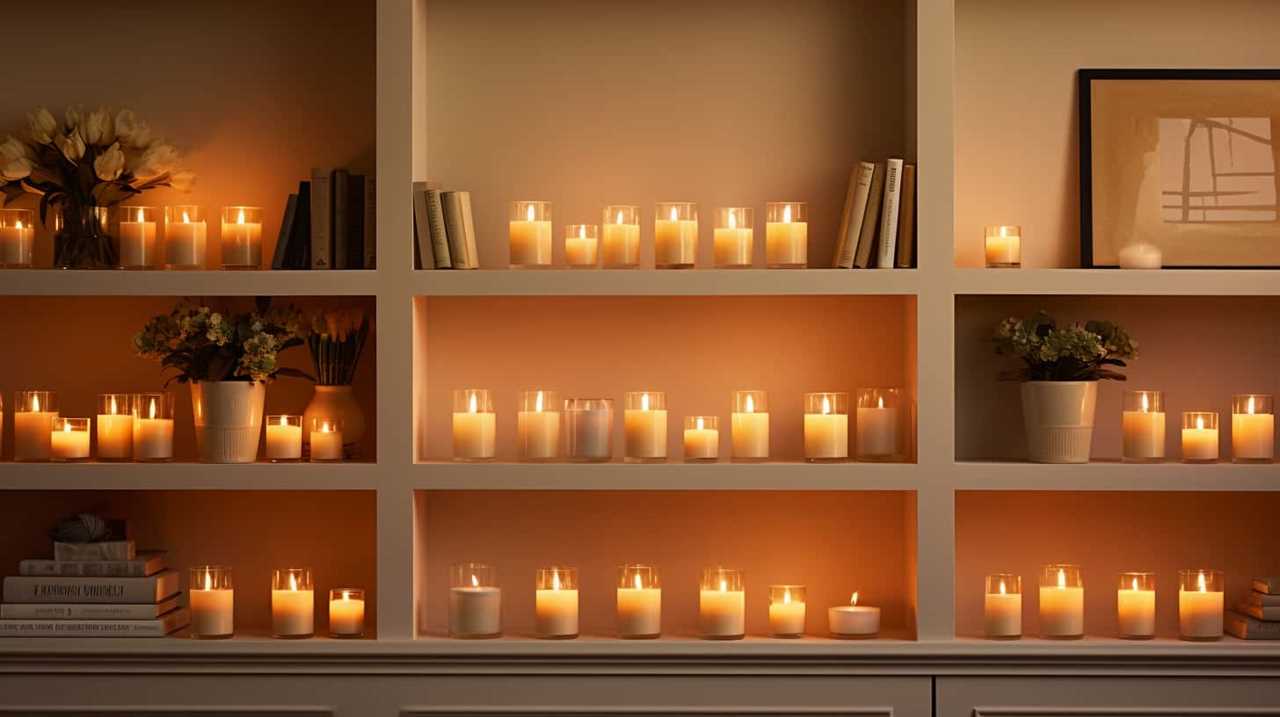
Here are some tips for cooling and hardening the wax:
- Patience is key: It’s important to resist the temptation to touch or move the container while the wax is cooling. This can disrupt the process and result in an uneven surface.
- Room temperature matters: Find a cool and undisturbed area in your home where the candle can be left to cool. Avoid placing it near drafts or direct sunlight, as these can affect the cooling process.
- Give it time: Depending on the size of your candle, it may take several hours or even overnight for the wax to completely cool and harden. Be patient and allow sufficient time for the process to complete.
Trim the Excess Wax
After the wax has cooled and hardened, we can proceed to trim the excess wax. Trimming the excess wax is an important step to ensure that our wickless candle looks neat and professional. To do this, we will need a sharp knife or a wick trimmer. Gently hold the candle and start trimming the excess wax around the edges. Be careful not to cut too deep or damage the candle. As you trim, you can collect the excess wax and use it for future candle making projects. Once you are satisfied with the shape and appearance of your candle, wipe off any wax residue with a clean cloth. Now, our wickless candle is ready to be displayed or gifted to someone special.
| Alternatives to Wickless Candles | Techniques for Trimming Excess Wax |
|---|---|
| Battery-operated candles | Use a sharp knife or wick trimmer |
| Flameless LED candles | Trim excess wax around the edges |
| Wax melts | Be careful not to cut too deep |
| Reed diffusers | Collect excess wax for future use |
| Scented plugins | Wipe off any wax residue with a cloth |
Decorate Your Wickless Candle
How can we creatively enhance the appearance of our wickless candle?
Decorating your wickless candle can make it truly unique and eye-catching. Here are some ideas to get you started:

- Different types of decorative materials for wickless candles:
- Gemstones: Add a touch of elegance and sparkle by gluing gemstones onto the outside of your candle.
- Ribbons and bows: Wrap a colorful ribbon around the base of the candle or tie a bow on top for a charming look.
- Dried flowers: Press dried flowers onto the surface of the candle using a heat-resistant adhesive.
- Techniques for creating unique designs on wickless candles:
- Wax carving: Use a heated tool to carve intricate patterns, symbols, or words directly onto the surface of the candle.
- Decoupage: Cut out decorative paper or fabric and adhere it to the candle using decoupage glue for a personalized design.
- Stenciling: Place a stencil on the candle and apply paint or glitter over it to create a beautiful design.
Store and Enjoy Your Wickless Candle
To store and enjoy our wickless candle, we simply need to find a safe and suitable location in our home. Here is a step-by-step guide on how to properly store and enjoy your wickless candle:
- Storage: Find a cool, dry place away from direct sunlight, heat sources, and flammable materials. A cupboard or shelf works well.
- Placement: Ensure the candle is on a stable, heat-resistant surface. Avoid placing it near curtains, bedding, or other combustible items.
- Enjoyment: To enjoy your wickless candle, place it in a wax warmer or diffuser designed for wickless candles. Turn it on and allow the fragrance to fill the room. Remember to follow the manufacturer’s instructions for your specific wax warmer or diffuser.
- Safety: Never leave a wax warmer or diffuser unattended, and keep it out of reach of children and pets. Remember to extinguish the warmer when not in use.
Safety Precautions and Tips
For safe and enjoyable use, it’s important to be aware of the necessary safety precautions and tips when using a wickless candle. Here are some key guidelines to follow:
- Preventing Burns
- Always place the wickless candle on a heat-resistant surface to avoid any accidents.
- Keep the candle away from flammable objects and ensure it’s out of reach of children and pets.
- Never leave a burning wickless candle unattended.
- Choosing the Right Wax
- Opt for a high-quality, non-toxic wax that’s specifically designed for wickless candles.
- Avoid using paraffin wax, as it can release harmful toxins when burned.
- Consider using soy wax or beeswax, which are natural and environmentally friendly alternatives.
Frequently Asked Questions
How Do I Clean the Container After Using a Wickless Candle?
After using a wickless candle, we have found some helpful cleaning tips for removing residue from the container. First, let the container cool completely. Then, use a cloth or sponge to gently scrub away any leftover wax.
Can I Use Essential Oils Instead of Fragrance Oils for My Wickless Candle?
Yes, you can use essential oils instead of fragrance oils for your wickless candle. Essential oils offer many benefits, such as natural aromas and potential therapeutic effects. However, ensure you use a proper carrier oil to avoid any safety risks or damage to your candle.
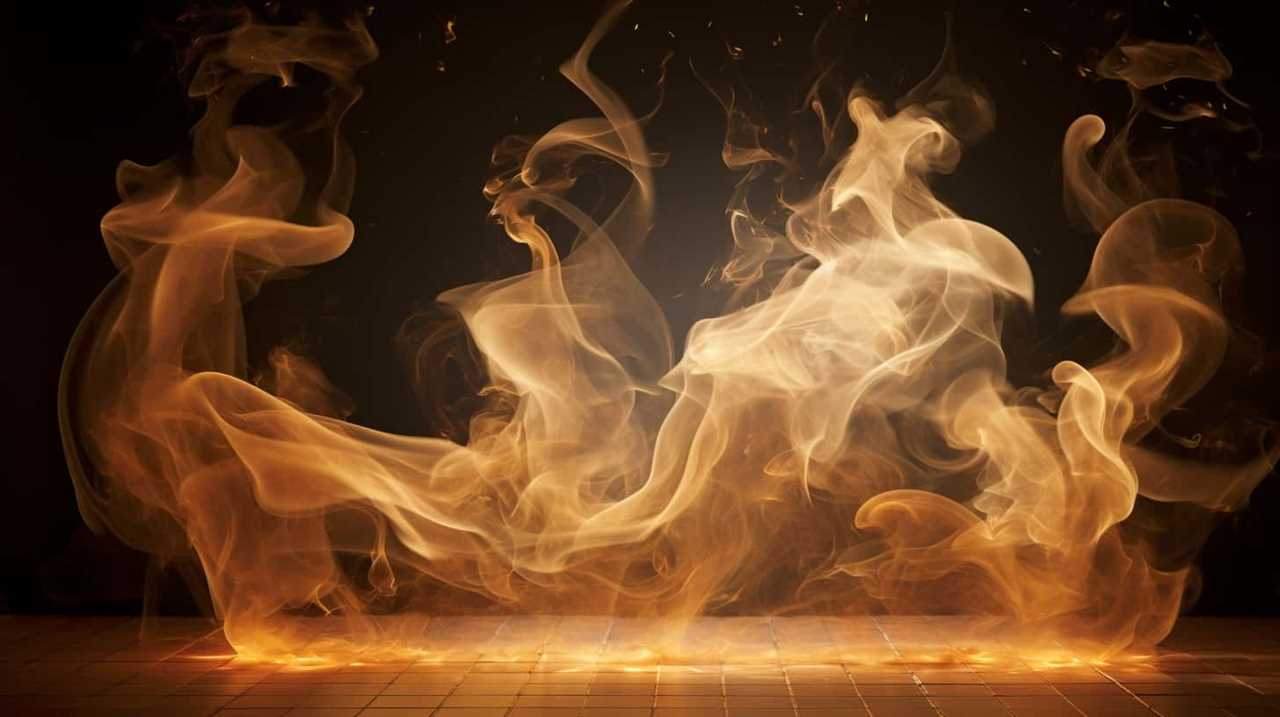
What Are Some Creative Ways to Decorate a Wickless Candle?
Looking to personalize your wickless candle? Get ready for some creative candle decorating ideas! We’ve got unique ways to make your candle stand out and reflect your style. Let’s dive in!
Can I Use a Different Type of Wax for My Wickless Candle?
Yes, we can use different types of wax for our wickless candles. It offers various benefits, such as the ability to incorporate essential oils for a lovely scent. Let’s explore the step-by-step process of making a wickless candle with different wax options.
How Long Does It Take for the Wax to Cool and Harden Completely?
The wax cooling time can vary depending on factors like room temperature and the type of wax used. It typically takes a few hours for the wax to cool and harden completely.
Conclusion
Now that you’ve learned how to make a wickless candle, you can indulge in the cozy and comforting glow of candlelight without any worries. Imagine the soft flickering flames dancing within your beautifully decorated container, filling your space with a warm and inviting atmosphere.
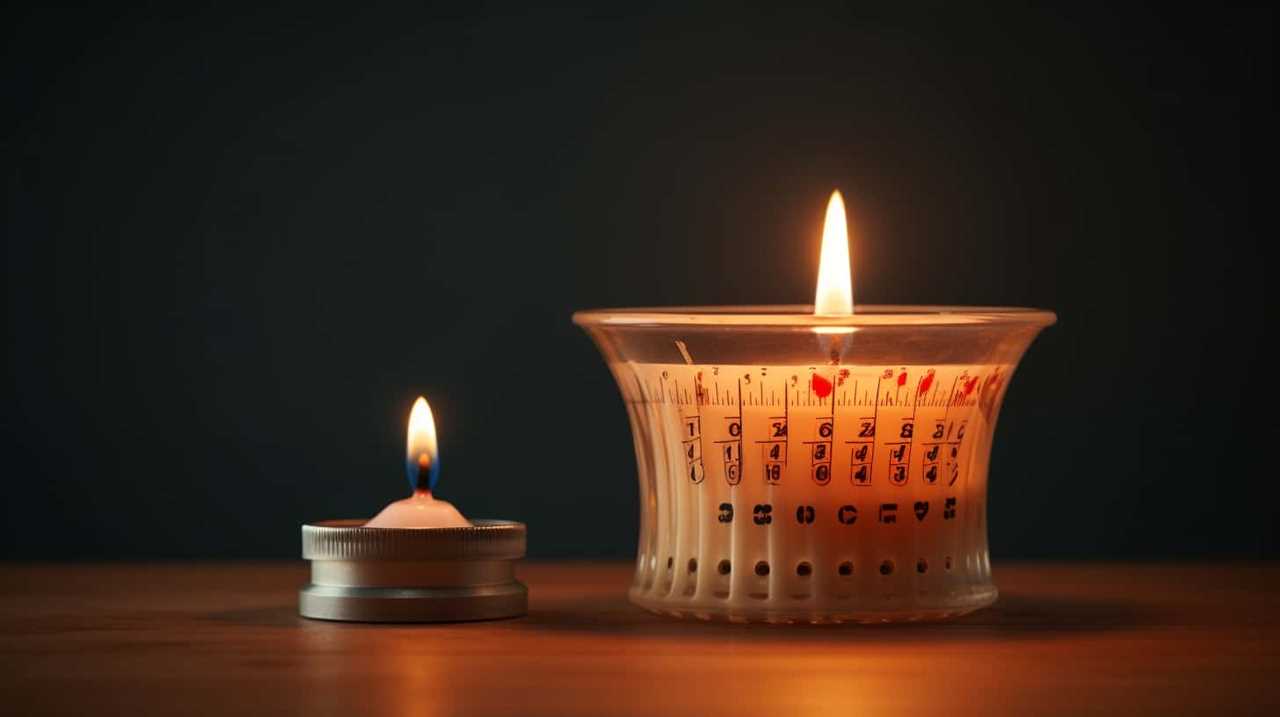
With a bit of creativity and some basic supplies, you can create your own unique wickless candles that will add a touch of magic to any room. So go ahead, unleash your creativity, and enjoy the soothing ambiance of your homemade wickless candles.
My name is Jane and I absolutely adore candles. They can be found all over my house – in every room and on every surface. I am drawn to the delightful scent of candles and how they create a warm and cozy atmosphere.
Candles hold a special place in my heart. They help me unwind and destress after a tiring day. They evoke joyful memories and bring me a sense of tranquility and serenity. I truly cannot picture my life without candles!
Candles
How to Make Candle Labels on Canva

Ready to take your candle-making business to the next level? This guide will walk you through creating stunning candle labels with Canva.
With Canva’s user-friendly interface and powerful design tools, you’ll be able to create professional-looking labels that will make your products stand out from the competition.
We’ll walk you through the process step-by-step, from choosing the perfect template to adding text and graphics that reflect your brand.
Plus, we’ll share tips for a polished finish and guide you on how to print and apply your labels.

Get ready to elevate your candle packaging game and impress your customers with beautiful, custom-made labels.
Let’s dive in!
Key Takeaways
- Canva offers a wide range of templates and customization options for designing candle labels.
- Consider color selection tips, font choices, and graphics to enhance the overall look and feel of the label.
- Canva allows for easy customization of candle labels with a wide range of font styles, layout options, and image placement techniques.
- Experiment with colors, backgrounds, and label design elements to create visually appealing and personalized candle labels.
Getting Started With Canva
To begin creating candle labels on Canva, we’ll first need to familiarize ourselves with the platform and its features. Canva is a user-friendly graphic design tool that offers a wide range of templates and customization options.
When designing candle labels, one of the key factors to consider is the color scheme. Choosing the right colors can evoke different emotions and enhance the overall aesthetic of your labels. Canva provides a vast selection of color palettes to choose from, making it easy to find the perfect combination for your candles.

Additionally, Canva offers a variety of design templates specifically designed for labels. These templates provide a great starting point and can be customized to fit your brand and style.
With Canva’s intuitive interface and helpful features, creating stunning candle labels has never been easier.
Choosing the Perfect Template
We can easily find the ideal template for candle labels by exploring Canva’s extensive selection of design options. When it comes to template selection, Canva offers a wide range of choices to suit any style or theme.
Here are five key considerations to keep in mind when browsing for the perfect template:
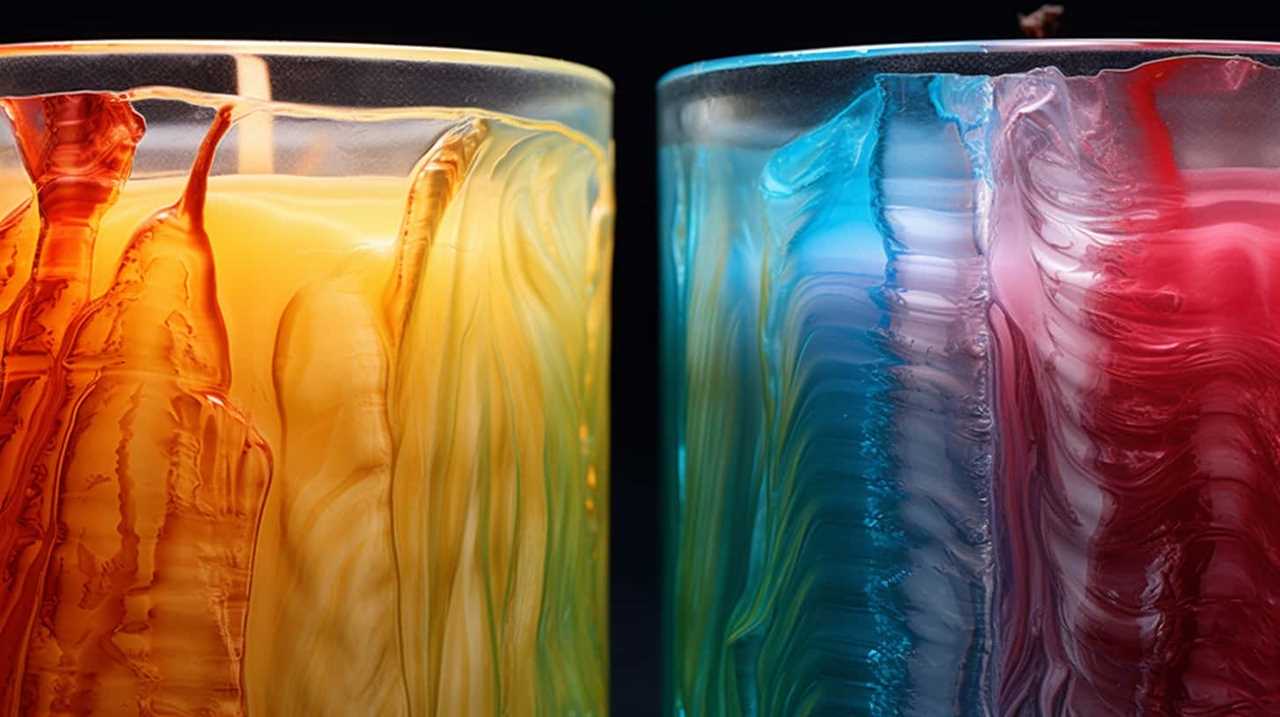
- Design Inspiration: Canva provides a plethora of pre-designed templates that can serve as inspiration for your candle label design.
- Customizability: Look for templates that allow you to customize the colors, fonts, and graphics to match your brand or personal preferences.
- Layout Options: Consider templates with different layout options, such as circular labels, rectangular labels, or even custom shapes.
- Theme and Aesthetic: Choose a template that aligns with the theme and aesthetic of your candles, whether it’s rustic, minimalist, or elegant.
- Label Size: Ensure that the template is the right size for your candle labels, whether you’re using tin containers, glass jars, or any other packaging.
With these considerations in mind, we can now move on to customizing the design elements to create unique and eye-catching candle labels.
Customizing the Design Elements
Now that we’ve chosen the perfect template for our candle labels, let’s dive into customizing the design elements.
The first point to consider is color selection tips, as the right colors can evoke the desired mood or match your brand aesthetic.
Next, we’ll delve into font and typography choices, exploring how different styles can enhance the overall look and feel of the label.

Lastly, we’ll discuss the importance of adding graphics and illustrations to make your candle labels visually appealing and unique.
Color Selection Tips
For the color selection tips when customizing the design elements for your candle labels on Canva, consider using an article determiner. The right colors can make a significant impact on the overall appeal and effectiveness of your candle labels. Here are some tips to help you choose the perfect colors for your labels:
- Understand color psychology and how different colors can evoke specific emotions or convey certain messages.
- Consider the color coordination with your brand identity and the overall theme of your candles.
- Use contrasting colors to make important information or elements stand out.
- Experiment with different color combinations to find the one that best represents your brand and resonates with your target audience.
- Don’t be afraid to use bold and vibrant colors to grab attention and create a memorable impression.
When you’ve chosen the perfect colors for your candle labels, it’s time to move on to the next important aspect: font and typography choices.
Font and Typography Choices
After considering the color selection tips for your candle labels on Canva, it’s important to now focus on customizing the design elements by choosing the right font and typography. Font pairing plays a crucial role in creating visually appealing and cohesive designs. By combining different fonts that complement each other, you can add depth and personality to your candle labels. It’s essential to stay updated with typography trends to ensure your designs look modern and professional. Here are a few popular font pairings and typography trends to consider:
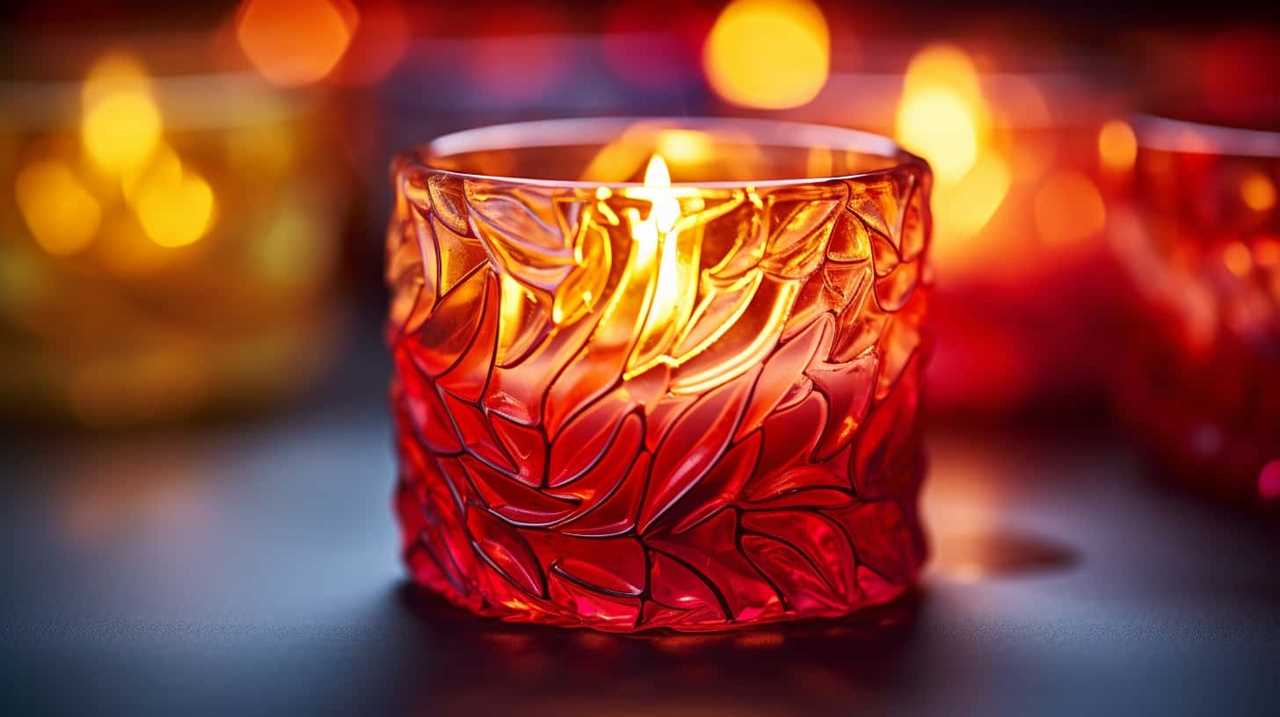
| Font Pairing | Typography Trends |
|---|---|
| Serif + Sans-serif | Minimalistic Designs |
| Script + Sans-serif | Handwritten Elegance |
| Bold + Light | Contrast and Hierarchy |
| Monospace + Sans-serif | Retro and Vintage |
Adding Graphics and Illustrations
To further enhance the visual appeal of your candle labels, we can now delve into the process of incorporating graphics and illustrations into the design elements. Graphics and branding play a significant role in capturing the attention of your customers and conveying your brand’s identity.
Here are five ways to incorporate illustrations into your candle label design:
- Add a small icon or symbol that represents your brand or the scent of the candle.
- Use illustrations to showcase the key ingredients or materials used in the candle.
- Create custom illustrations that reflect the mood or theme of the candle.
- Incorporate illustrations of the candle’s packaging or container to give customers a preview of what they can expect.
- Use graphics to highlight any special features or benefits of the candle, such as long-lasting burn time or eco-friendly ingredients.
By incorporating illustrations strategically, you can create a visually appealing and cohesive candle label design that aligns with your brand’s identity.
Now that we’ve covered the graphics and illustrations, let’s move on to adding text to your candle label.
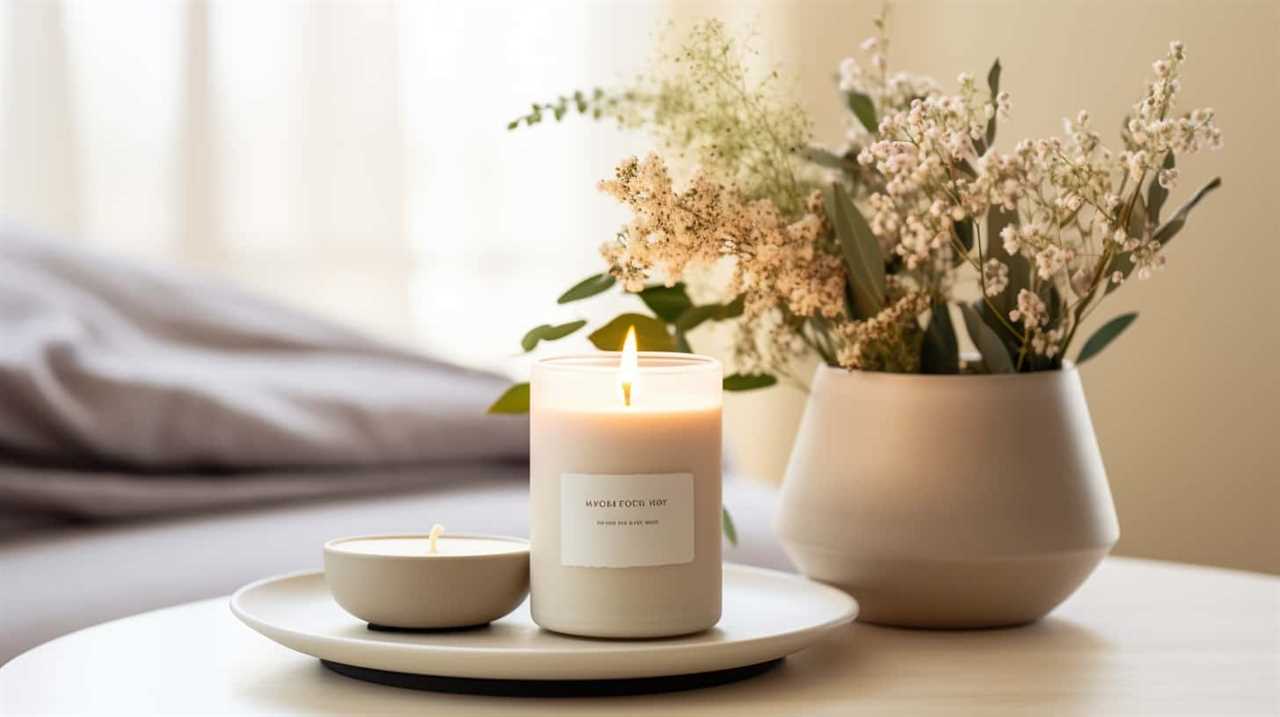
Adding Text to Your Candle Label
We love adding text to our candle labels using Canva because it allows us to easily customize and personalize each label. With Canva’s wide range of font selection and label layout options, we can create beautiful and professional-looking designs that capture the essence of our candles. The right font can evoke a sense of elegance, warmth, or playfulness, depending on the mood we want to convey. To give you an idea of the possibilities, here’s a table showcasing different font styles and their emotional impact:
| Font Style | Emotional Impact |
|---|---|
| Script | Romantic |
| Sans Serif | Modern |
| Serif | Classic |
| Handwritten | Whimsical |
| Bold | Strong |
Incorporating Images and Graphics
When it comes to creating candle labels that catch the eye, the visual impact of graphics is crucial. Incorporating images and graphics in your design can elevate the overall look and feel of your label.
From choosing the right images to utilizing image placement techniques, we’ll explore how to design candle labels that leave a lasting impression.
Visual Impact of Graphics
By incorporating eye-catching images and graphics, we enhance the visual impact of our candle labels on Canva. Visual storytelling is an important aspect of branding, and it helps to convey the message and personality of our candles.
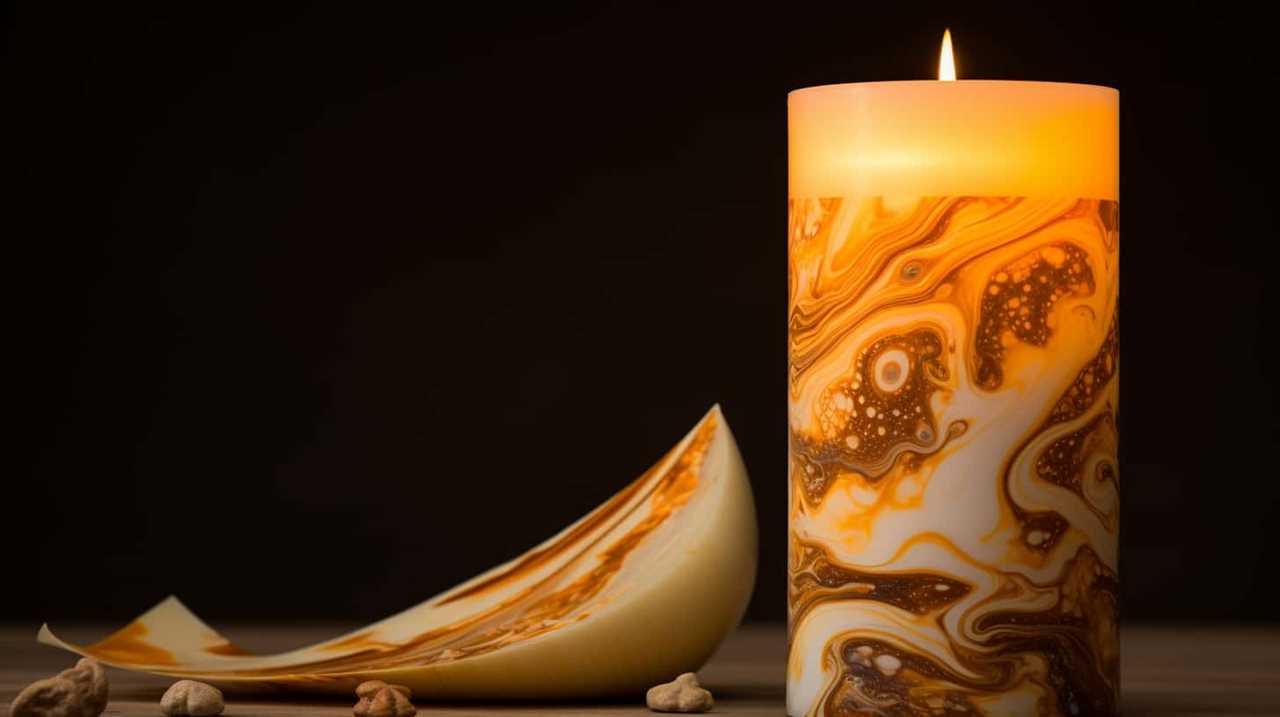
Here are five ways in which we can make our candle labels visually impactful:
- Choose high-quality images that capture the essence of our candles and align with our brand identity.
- Use bold and vibrant colors to draw attention and create a cohesive look.
- Incorporate unique and creative typography to make our labels stand out.
- Experiment with different shapes and layouts to add visual interest and break away from the traditional label design.
- Consider adding subtle textures or patterns to add depth and make our labels more tactile.
Designing With Images
One effective way to enhance the visual appeal of candle labels on Canva is by incorporating high-quality images and graphics. Designing with illustrations not only adds a touch of creativity but also helps to convey the essence of the product.
When incorporating product details into the design, using images can be a powerful tool to showcase the unique features and qualities of the candles. For example, you can include images of the different scents or ingredients used in the candles to give customers a better idea of what they can expect.
Furthermore, graphics such as decorative borders or patterns can add visual interest and make the labels more eye-catching. By carefully selecting and incorporating images and graphics, you can create candle labels that aren’t only visually appealing but also effectively communicate the essence of your product.
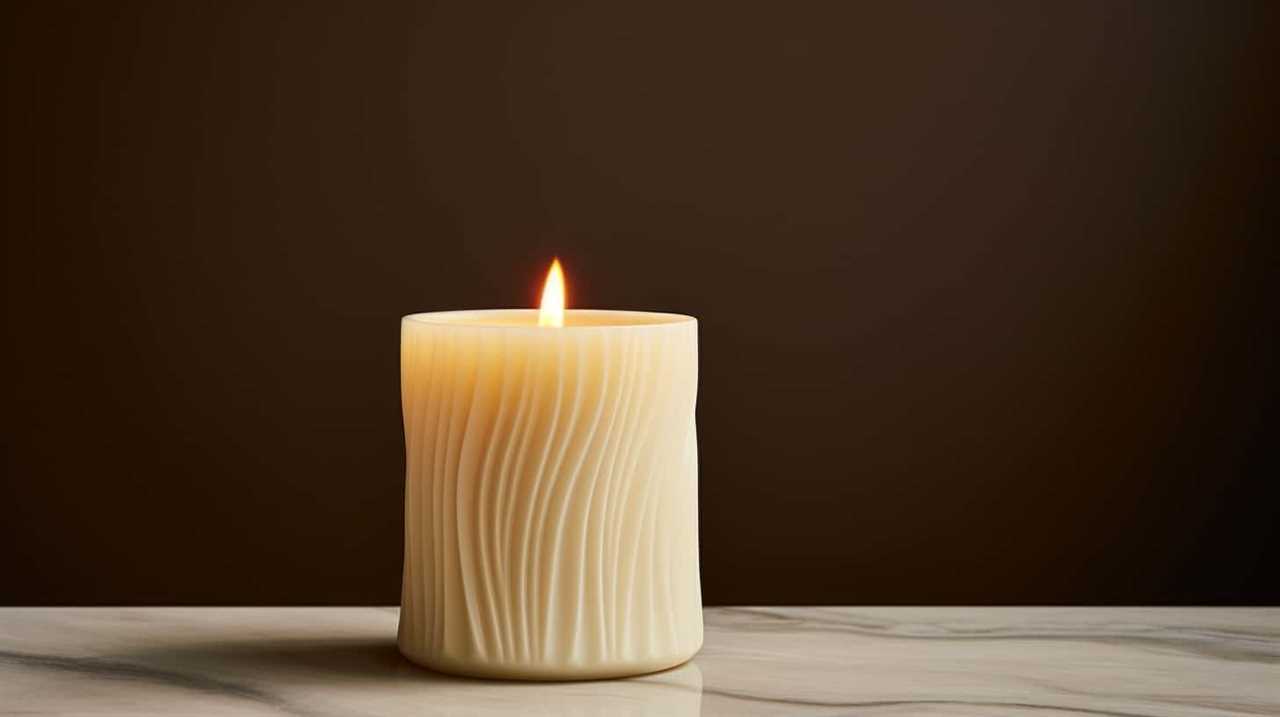
Image Placement Techniques
To incorporate images and graphics effectively into candle labels on Canva, we can utilize various image placement techniques. These techniques allow us to enhance the visual appeal of our labels and create a cohesive and professional design. Here are five image placement techniques that can elevate your candle labels:
- Blend Modes: Experiment with different blend modes to seamlessly integrate your images with the background and other elements of your label design.
- Layering: Use multiple layers to create depth and dimension in your design. Arrange your images in a way that complements the overall composition.
- Masking: Utilize masking techniques to selectively reveal or hide parts of your images. This allows you to create unique effects and highlight specific elements.
- Alignment: Ensure that your images are properly aligned with other design elements, such as text or graphics. This helps maintain a balanced and visually pleasing layout.
- Resizing and Scaling: Adjust the size of your images to fit the label dimensions and maintain clarity. Scaling your images proportionally prevents distortion and pixelation.
Playing With Colors and Backgrounds
We frequently experiment with colors and backgrounds to enhance our candle labels on Canva. Color psychology plays a crucial role in creating a cohesive design that resonates with our audience. By understanding the emotions and associations different colors evoke, we can strategically choose hues that reflect the essence of our brand and the mood we want to convey.
For example, warm tones like red and orange can evoke feelings of warmth and comfort, perfect for cozy candle labels. On the other hand, cool tones like blue and green can create a sense of calm and serenity, ideal for relaxing scents. By experimenting with different color combinations and backgrounds, we can create visually appealing labels that capture the attention of our customers.
Now, let’s dive into how we can use Canva’s design tools and features to bring our candle labels to life.
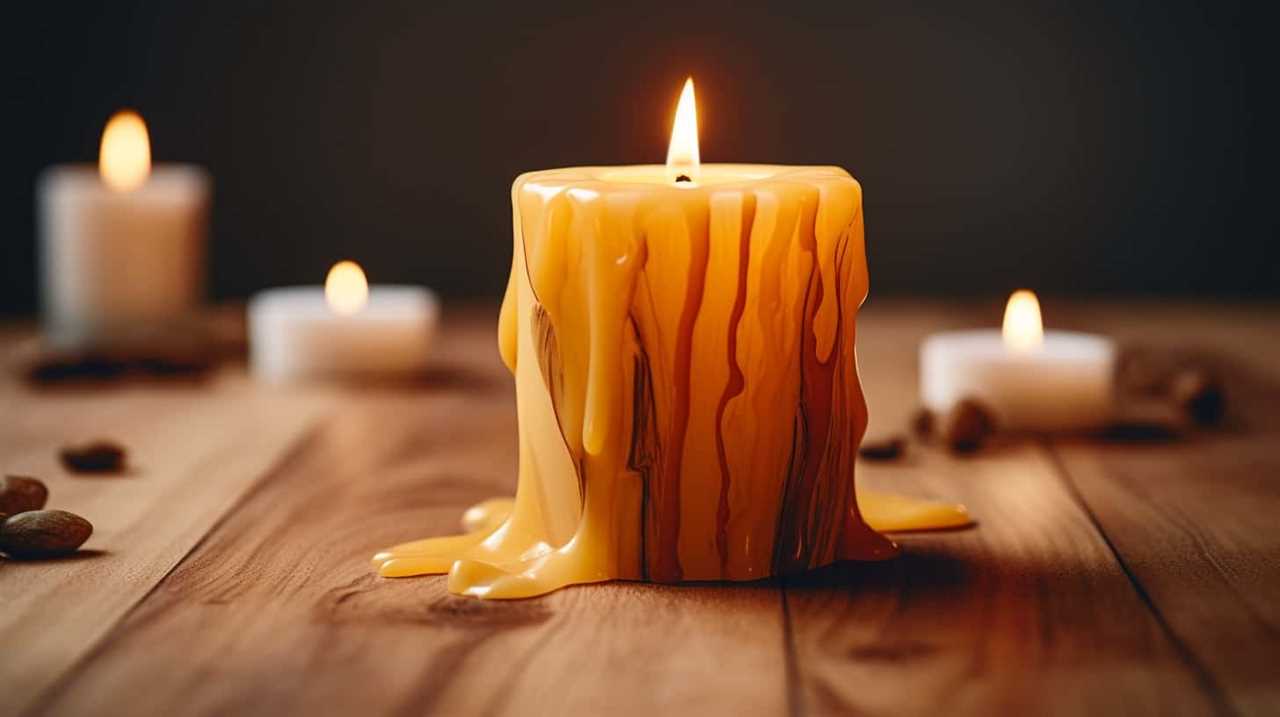
Using Canva’s Design Tools and Features
Our favorite design tool on Canva is its user-friendly interface, which allows us to create stunning candle labels with ease. With Canva’s collaboration features, we can work seamlessly with our team members, making the design process more efficient.
Here are five amazing features that Canva offers for creating candle label mockups:
- Drag-and-drop functionality: Canva’s drag-and-drop feature allows us to effortlessly add and arrange elements on our candle label design.
- Extensive library of templates: Canva provides a wide range of pre-designed templates specifically tailored for candle labels, saving us time and effort.
- Customizable text options: We can choose from a variety of fonts and text styles, ensuring that our candle label design perfectly matches our brand.
- Image editing tools: Canva allows us to edit and enhance our candle label images, making them more visually appealing.
- Access to a vast collection of graphics and illustrations: Canva’s extensive library of graphics and illustrations gives us endless possibilities for creating unique and eye-catching candle label designs.
With these powerful design tools and features, Canva makes creating candle labels a breeze, allowing us to unleash our creativity and produce professional-looking designs.
Making Your Label Unique With Personalization
Let’s add a personal touch to our candle labels by customizing the design and adding unique elements.

By using Canva’s design tools and features, we can create labels that truly reflect our brand and style.
Whether it’s choosing a specific font, adding a personal logo, or incorporating meaningful images, personalization allows us to create labels that stand out and leave a lasting impression on our customers.
Customizing Label Design
To customize the design of your candle labels and make them truly unique, incorporate personalized elements that reflect your brand and aesthetics. Here are some ideas to help you create a stunning label design:
- Custom Label Dimensions: Experiment with different label sizes to find the perfect fit for your candles. Consider square, rectangular, or even circular labels for a distinctive look.
- Label Printing Options: Explore various printing techniques such as foil stamping, embossing, or matte finishes to add texture and visual appeal to your labels.
- Color Palette: Choose colors that align with your brand identity and evoke the desired emotions. Consider using complementary or contrasting shades to make your labels stand out.
- Typography: Select fonts that align with your brand personality and are legible at different sizes. Play with font styles, sizes, and spacing to create visual hierarchy and enhance readability.
- Graphics and Illustrations: Incorporate custom illustrations or graphics that represent your brand or the scent of your candles. These elements can add a touch of uniqueness and personality to your labels.
Adding Personal Touch
One way to make your candle labels unique and personalized is by incorporating a custom logo or monogram. Adding a personal touch to your labels not only makes them stand out but also reflects your brand and style. There are various personalization techniques you can use to make your candle labels truly one-of-a-kind.

For example, you can experiment with different fonts, colors, and graphics to create a visually appealing design. Another creative label idea is to include a handwritten element, such as a signature or a special message, to add a personal and heartfelt touch. Additionally, you can consider using unique shapes or patterns that align with your brand’s aesthetic. By utilizing these personalization techniques, you can create candle labels that aren’t only visually appealing but also reflect your brand’s identity and resonate with your customers.
Now, let’s move on to some tips for achieving a professional-looking finish on your candle labels.
Tips for a Professional-Looking Finish
To achieve a professional-looking finish for your candle labels, we recommend incorporating clean and minimalist designs that align with your brand aesthetic. Here are some tips to help you create labels that stand out:
- Font Pairing: Choose fonts that complement each other and reflect the mood of your brand. A combination of a bold, eye-catching font with a more elegant and legible font can create a visually appealing label.
- Label Sizing: Consider the size and shape of your candle containers when designing your labels. Make sure the labels fit properly and don’t overpower the candles. Experiment with different sizes to find the perfect balance.
- Consistent Branding: Use consistent colors, fonts, and design elements across all your candle labels to create a cohesive and professional look.
- High-Quality Images: Use high-resolution images that showcase your candles in the best light. Avoid pixelation and blur, as they can make your labels look unprofessional.
- Attention to Detail: Pay close attention to spacing, alignment, and overall composition. A well-organized and well-balanced label will give off a professional vibe.
Printing and Applying Your Candle Labels
We recommend using a professional printing service to ensure high-quality results when printing and applying your candle labels. These printing techniques will help bring your designs to life with vibrant colors and sharp details. Look for a printing service that specializes in label printing to ensure they have the necessary equipment and expertise. They can guide you on the best paper and finish options for your labels, such as glossy or matte.

Once you have your beautifully printed labels, it’s time to apply them to your candles. Label application methods can vary depending on the type of label and container you’re using. Some common methods include using adhesive labels, heat shrink sleeves, or printing directly onto the candle itself. Experiment with different methods to find the one that gives you the desired professional finish.
Frequently Asked Questions
How Do I Create a Canva Account?
To create a Canva account, we simply visit the Canva website and click on the "Sign up" button. Then, we fill in our details, choose a password, and voila! We’re ready to start creating amazing designs with Canva.
Can I Use Canva on My Mobile Device?
Yes, you can use Canva on your mobile device. With the Canva mobile app, you have access to a wide range of design templates, allowing you to create stunning candle labels on the go.
Can I Save My Design and Come Back to It Later?
Yes, you can save your design and come back to it later on Canva. This feature ensures the accessibility and convenience of your work, allowing you to easily pick up where you left off and make any necessary adjustments.
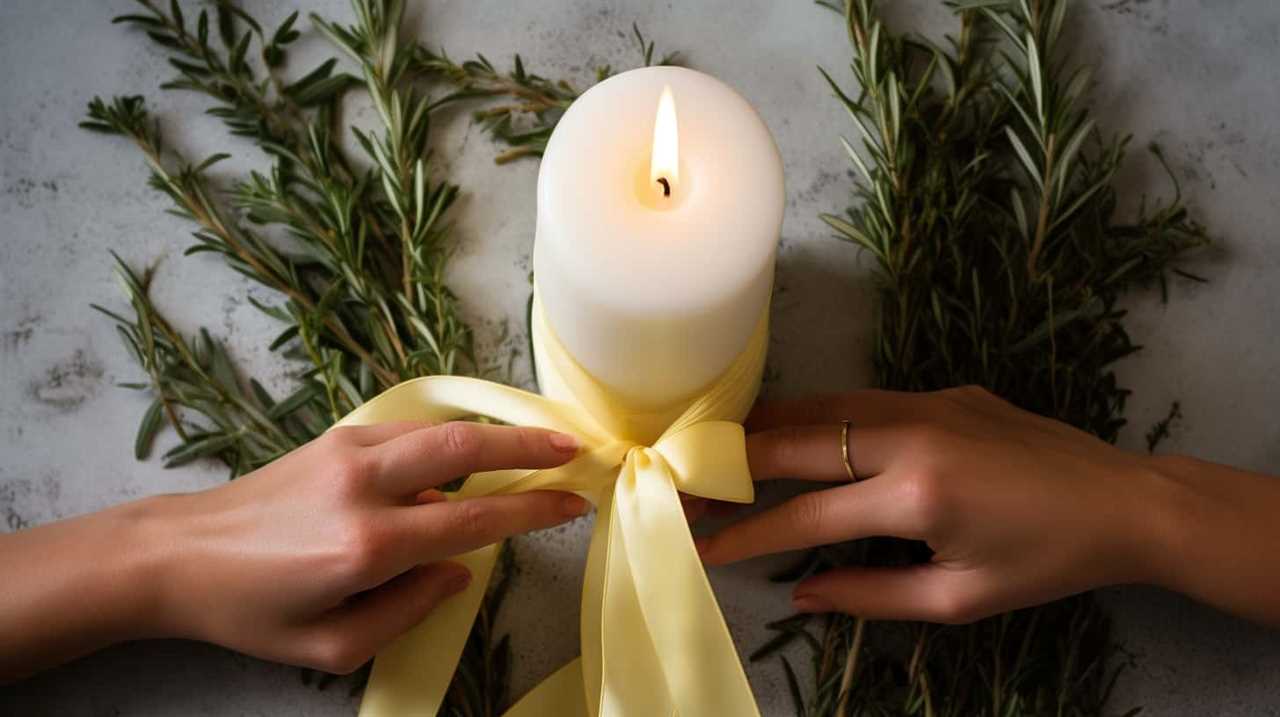
Are There Any Copyright Restrictions on the Images and Graphics Available in Canva?
There are copyright restrictions on the images and graphics in Canva. However, Canva offers a range of licensing options to ensure you can use the content legally and avoid any copyright infringement issues.
Can I Print My Candle Labels at Home or Do I Need to Use a Professional Printing Service?
We can print our candle labels at home or use a professional printing service. Home printing offers convenience and control, while professional printing ensures high-quality results. It depends on our preferences and resources.
Conclusion
So there you have it, folks! Making candle labels on Canva is as easy as pie. Who needs professional designers when you can create stunning labels yourself?
With Canva’s user-friendly interface and a plethora of customizable templates, you’ll have your candles looking like they came straight from a high-end boutique.

So go ahead, unleash your inner artist and start designing your unique candle labels today. Your customers won’t believe you did it yourself!
My name is Jane and I absolutely adore candles. They can be found all over my house – in every room and on every surface. I am drawn to the delightful scent of candles and how they create a warm and cozy atmosphere.
Candles hold a special place in my heart. They help me unwind and destress after a tiring day. They evoke joyful memories and bring me a sense of tranquility and serenity. I truly cannot picture my life without candles!
-

 Beginners Guides3 months ago
Beginners Guides3 months agoHow to Determine If Candles Will Melt Outside
-
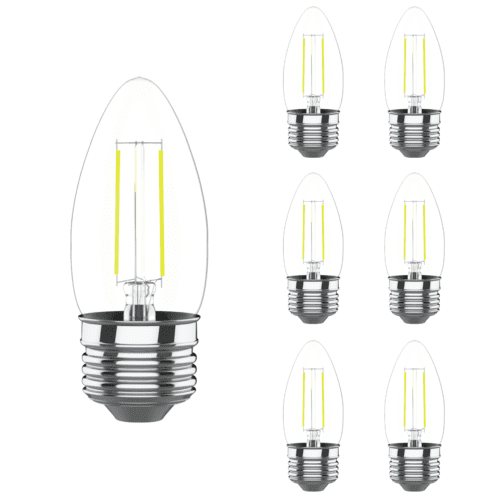
 Beginners Guides3 months ago
Beginners Guides3 months agoThe Similarities of Candle and Light Bulb Lamps
-

 Beginners Guides3 months ago
Beginners Guides3 months agoWhy is My Candle Not Sticking to the Glass?
-
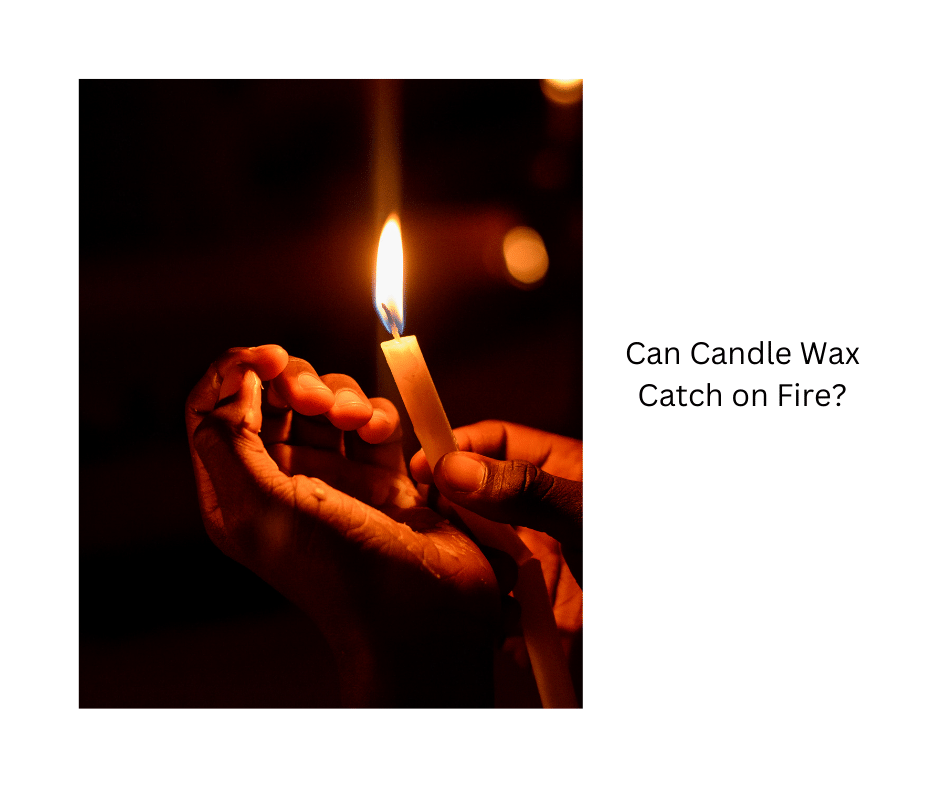
 Beginners Guides3 months ago
Beginners Guides3 months agoCan Candle Wax Catch on Fire?
-

 Beginners Guides2 months ago
Beginners Guides2 months agoHow Many Types Of Candy Are There
-

 Beginners Guides3 months ago
Beginners Guides3 months agoHow To Dress A Candle
-

 Beginners Guides2 months ago
Beginners Guides2 months agoWhat Was The First Individually Wrapped Penny Candy In America
-

 Candles3 months ago
Candles3 months agoHow to Make Hidden Message Candle


